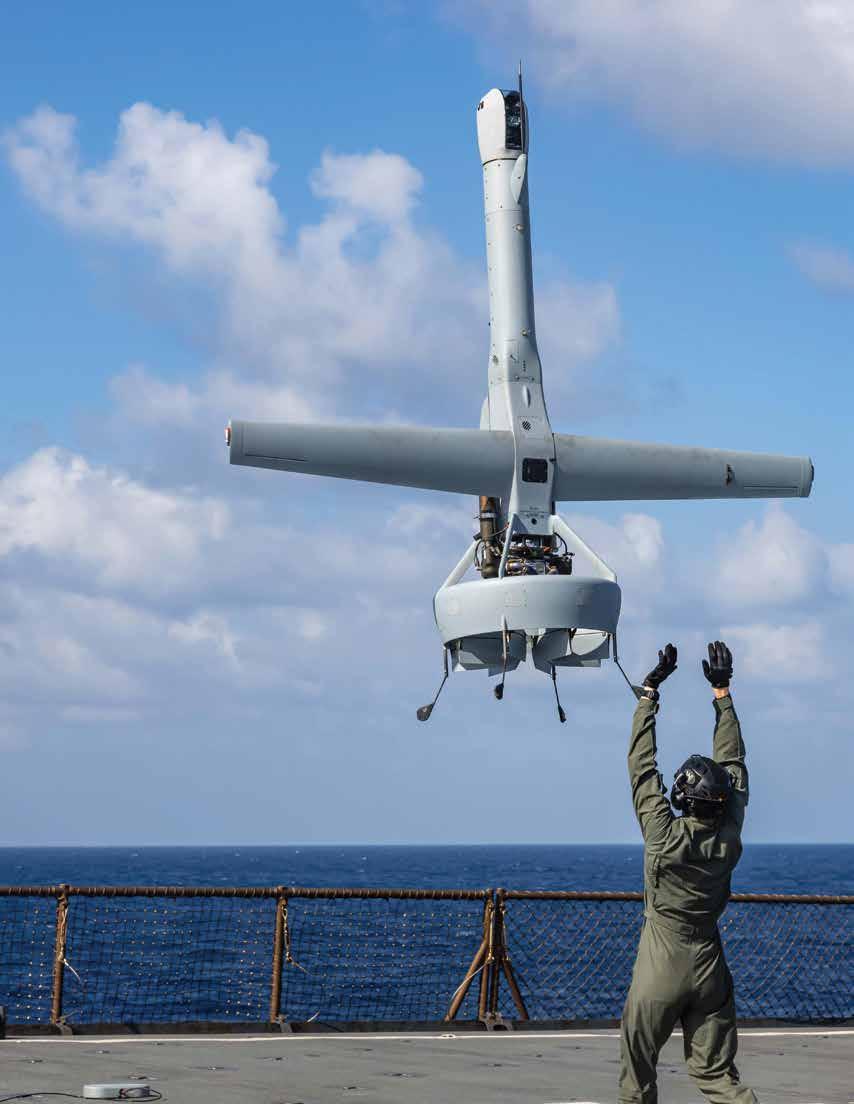
The Journal of Military Electronics & Computing JOURNAL Revolutionizing Radar Systems with Software-Defined Radios (SDRS) April 2024, Volume 26 - Number 4 • cotsjournalonline.com The Role of Secure Data Storage in Data-driven Decision Making
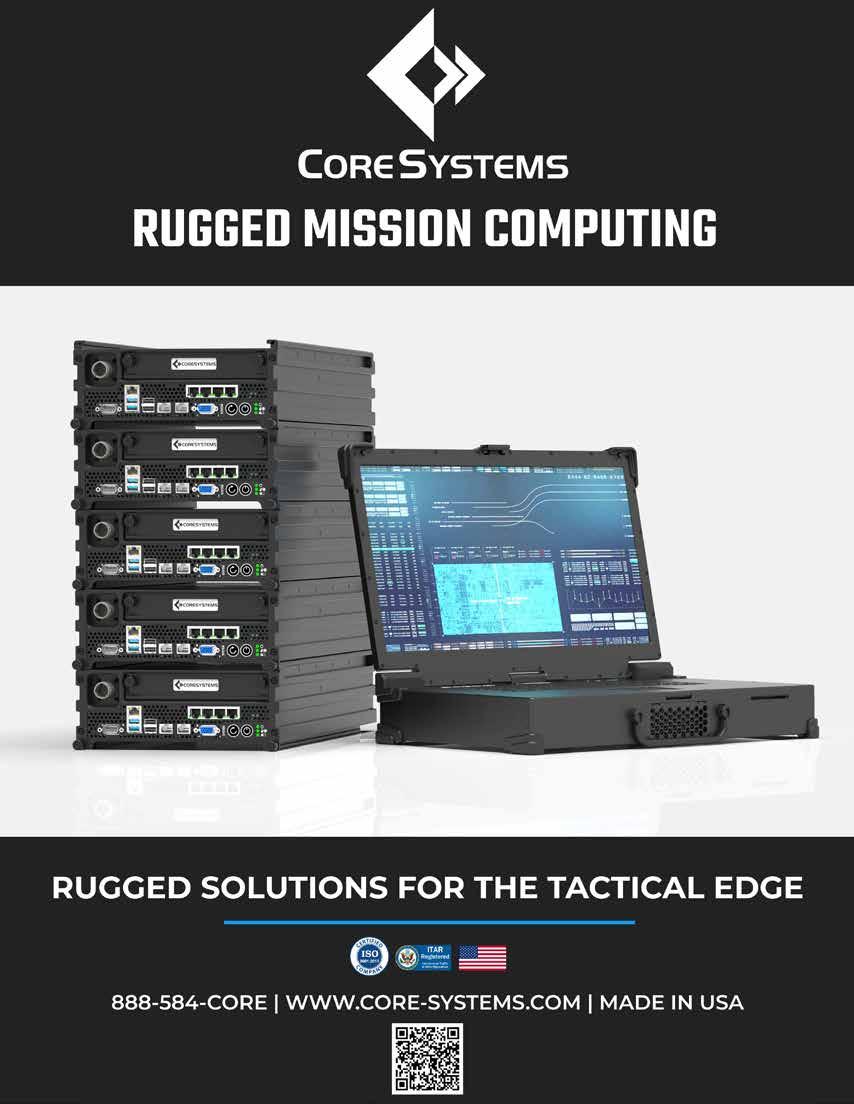

COTS (kots), n. 1. Commercial off-the-shelf. Terminology popularized in 1994 within U.S. DoD by SECDEF Wm. Perry’s “Perry Memo” that changed military industry purchasing and design guidelines, making Mil-Specs acceptable only by waiver. COTS is generally defined for technology, goods and services as: a) using commercial business practices and specifications, b) not developed under government funding, c) offered for sale to the general market, d) still must meet the program ORD. 2. Commercial business practices include the accepted practice of customer-paid minor modification to standard COTS products to meet the customer’s unique requirements.
—Ant. When applied to the procurement of electronics for he U.S. Military, COTS is a procurement philosophy and does not imply commercial, office environment or any other durability grade. E.g., rad-hard components designed and offered for sale to the general market are COTS if they were developed by the company and not under government funding.
By Brandon Malatest, Founder and Chief Operating Officer l
SYSTEM DEVELOPMENT
By Randal Barber, CEO,
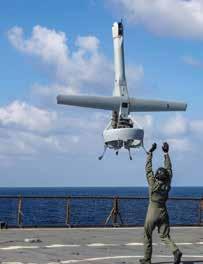
A V-BAT uncrewed aerial system launches from the dock landing ship USS Carter Hall during operations in the Mediterranean Sea, Feb. 9, 2024. The V-BAT provides the capability to increase maritime awareness through the utilization of intelligence, surveillance, and reconnaissance sensors.

6 The Inside Track DEPARTMENTS COT’S PICKS 24 Editor’s Choice for April
Journal
Military Electronics
Computing JOURNAL SPECIAL FEATURE 14
The
of
&
ERevolutionizing Radar Systems with Software-Defined Radios (SDRS)
Cover Image: Vertical Launch
3 COTS Journal | April 2024
Secure
Data-driven
20 The Role of
Data Storage in
Decision Making
www.cdsg.com
The Journal of Military Electronics & Computing
JOURNAL
EDITORIAL
EDITORIAL SUBMISSION AND RELEASES
johnr@rtc-media.com
PUBLISHER/CEO
John Reardon Johnr@rtc-media.com
CONTRIBUTING EDITORS
Tom Williams
Glenn ImObersteg
Robert Hoffman
ART AND PRODUCTION
CREATIVE DIRECTOR
David Ramos drdesignservices@ymail.com
DIGITAL MARKETING MANAGER
Scott Blair Scott@blair-media.com
AD TRAFFIC
Vaughn Orchard Vaughno@rtc-media.com
FINANCE AND ACCOUNTING
Paige Reardon paiger@rtc-media.com
ADMINISTRATION/CIRCULATION
Dawn Dunaway dawnr@rtc-media.com
ACCOUNT MANAGER
SALES MANAGER
Vaughn Orchard Vaughno@rtc-media.com
CUSTOM AND CONTRACT SERVICES
John Reardon Johnr@rtc-media.com
COTS Journal
CORPORATE OFFICE
RTC Media 3180 Sitio Sendero, Carlsbad, CA. 92009 Phone: (949) 226-2023 Fax: (949) 226-2050 www.rtc-media.com
PUBLISHED BY RTC MEDIA
Copyright 2024, RTC Media. Printed in the United States. All rights reserved. All related graphics are trademarks of The RTC Group. All other brand and product names are the property of their holders.

COTS Journal | April 2024 4
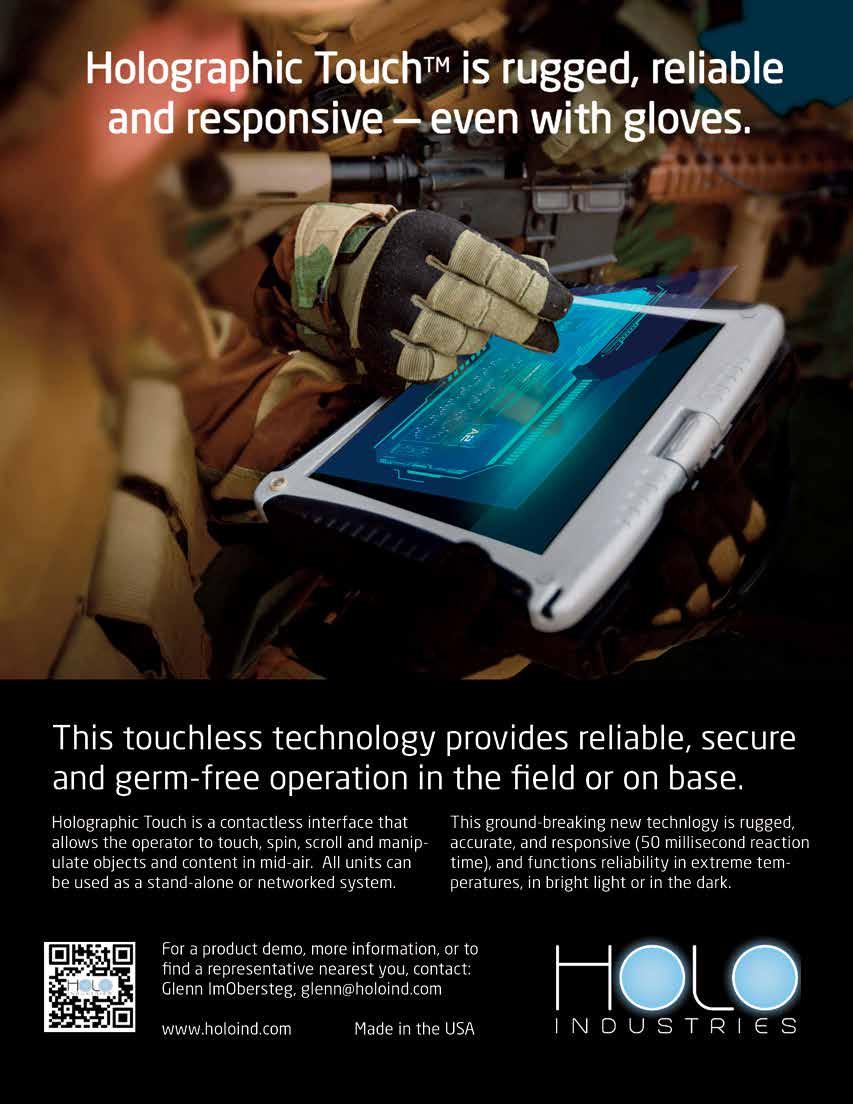
The INSIDE TRACK
Breakthrough promises secure quantum computing at home
Millions of individuals and companies could soon harness the full power of next-generation quantum computing, thanks to a breakthrough by scientists at Oxford University Physics guaranteeing security and privacy. This advance promises to unlock the transformative potential of cloudbased quantum computing and is detailed in a new study published in the influential U.S. scientific journal Physical Review Letters.
Quantum computing is developing rapidly, paving the way for new applications that could transform services in many areas, like healthcare and financial services. It works fundamentally differently from conventional computing and is potentially far more powerful. However, controlled conditions are currently required to remain stable, and there are concerns about data authenticity and the effectiveness of current security and encryption systems.
Several leading providers of cloud-based services, like Google, Amazon, and IBM, already separately offer some elements of quantum computing. Safeguarding the privacy and security of customer data is a vital precursor to scaling up and expanding its use and for the development of new applications as technology advances. The
latest study by researchers at Oxford University Physics addresses these challenges.
“We have shown for the first time that quantum computing in the cloud can be accessed in a scalable, practical way, which will also give people complete security and privacy of data, plus the ability to verify its authenticity,” said Professor David Lucas, who co-heads the Oxford University Physics research team and is lead scientist at the U.K. Quantum Computing and Simulation Hub, led from Oxford University Physics.
In the new study, the researchers use an approach dubbed “blind quantum computing,” which connects two separate quantum computing entities – potentially an individual at home or in an office accessing a cloud server – in a completely secure way. Importantly, their new methods could be scaled up to large quantum computations.
“Using blind quantum computing, clients can access remote quantum computers to process confidential data with secret algorithms and verify the results are correct without revealing useful information. Realizing this concept is a big step forward in quantum computing and keeping our information safe online’’ said study lead Dr. Peter
Drmota of Oxford University Physics.
The researchers created a system comprising a fiber network link between a quantum computing server and a simple device detecting photons, or particles of light, at an independent computer remotely accessing its cloud services. This allows so-called blind quantum computing over a network. Every computation incurs a correction that must be applied to all that follow and needs real-time information to comply with the algorithm. The researchers used a unique combination of quantum memory and photons to achieve this.
“Never in history have the issues surrounding privacy of data and code been more urgently debated than in the present era of cloud computing and artificial intelligence,” said Professor David Lucas. “As quantum computers become more capable, people will seek to use them with complete security and privacy over networks, and our new results mark a step change in capability in this respect.”
The results could lead to the commercial development of devices that plug into laptops and safeguard data when people use quantum cloud computing services.
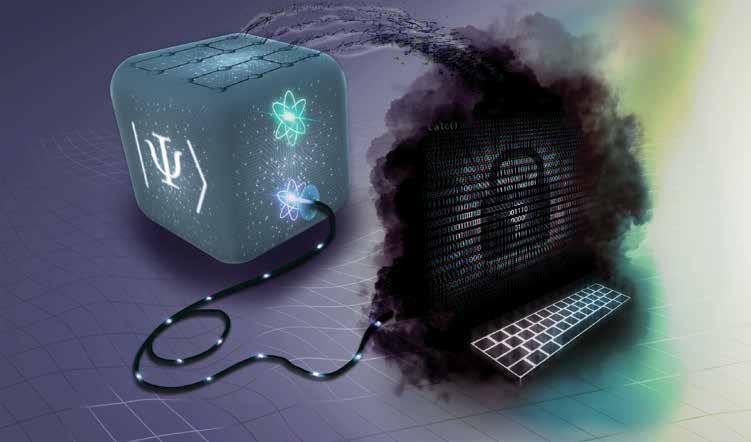
COTS Journal | April 2024 6
The INSIDE TRACK
OSS to Design and Manufacture a New Video Concentrator for U.S. Army 360-degree Visualization Systems Using the Leading GPU Platform for Embedded Applications
The design win positions OSS as the lead for the compute and distribution solution for the 360-degree Visualization System
This new video concentrator will be incorporated into the rugged 360-degree visualization compute system that OSS is designing and building for U.S. Army land vehicles, including the Stryker, Bradley, and Abrams. This new order expands the company’s scope on the visualization system that OSS originally announced in February 2023.
The vehicle visualization system uses OSS PCIe Gen 4 switch fabric technology and the same leading ARM CPU and GPU platform for autonomous machines and embedded applications used in the previously announced system. The OSS solution with the latest ARM/GPU system-on-modules now comprises everything from the sensor to the vehicle crew, including the sensor compute, low latency switching, crew compute, and high-resolution display workloads.
The latest win increases the million-dollar design opportunity generated last year related to the visualization system. Upon successful completion and testing in 2025, the system is projected to move to vehicle application and fielding. OSS will work closely with the U.S. Army to deliver prototypes of the new system in 2024.
The new video concentrator will add en-
hanced capabilities to the system. It can rapidly ingest and process large amounts of video information, including Gigabit Multimedia Serial Link (GMSL2) or other High-Efficiency Video Coding (H.265) compressed camera data. The data will then be disseminated throughout the vehicle to the crew computers over PCI Express at up to six times more incredible speed and 800 times lower latency than traditional Ethernet networking.
While the U.S. Army will initially use the video concentrator for the 360-degree visualization system, it can be used for various other A.I. applications that incorporate sensor fusion, including threat detection, friend/foe identification, and natural language processing for crew assist.
“Given their stringent performance requirements, this latest order from the U.S. Army represents an important validation of our expertise and capabilities in designing and manufacturing ruggedized, high-performance compute technology for A.I. and sensor fusion applications,” commented OSS CEO Mike Knowles. “It also demonstrates the continued ongoing revenue opportunities for existing government vehicles, as well as the potential for an array of additional A.I., sensor processing and sensor fusion applications.”
The solution will be designed to meet the requirements of the demanding MIL-STD 810H standard, enabling it to withstand the harshest environmental conditions where it will be internally or externally mounted on the vehicle, close to the sensors. OSS will also provide software enabling various camera protocols and an optimized data path for the system.
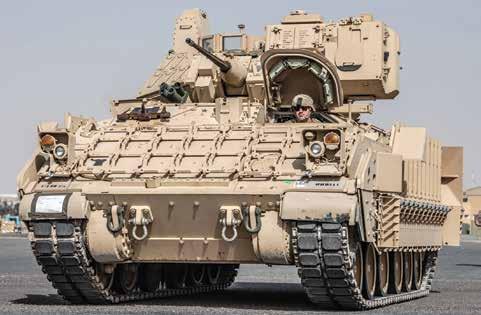

7 COTS Journal | April 2024
The INSIDE TRACK
BlueHalo Awards Mercury Production Agreement to Provide Digital Signal Processing Hardware for U.S. Space Force Satellite Control System
Mercury Systems, Inc. announced a production agreement with BlueHalo, the company transforming the future of global defense, to support the U.S. Space Force (USSF)’s Satellite Communication Augmentation Resource (SCAR) program.
Within the scope of the agreement, Mercury will provide a field-programmable gate array (FPGA)--based joint signal acquisition and digital beamforming solution for BlueHalo’s BADGER system. This multi-band deployable ground communications system simplifies mission operations through agile and re-configurable beamforming tiles.
“We are proud to provide signal processing technology for the SCAR program, which
will allow the United States to maintain its strategic advantage in the space domain,” said Ken Hermanny, VP and G.M. of Signal Technologies at Mercury. By leveraging commercial innovation from the Mercury Processing Platform, BlueHalo will deliver this game-changing capability at great speed and scale.”
BlueHalo was awarded the $1.4 billion SCAR contract in 2022 by the Space Rapid Capabilities Office (SCO), a direct reporting unit of the USSF. Last Fall, BlueHalo successfully demonstrated target tracking and processing of signals using Multi-band Software-Defined Antenna (MSDA) tiles deployed on its BADGER product. Mercury is currently delivering hardware based on its Quartz RFSoC and Navigator® Design Suite commercial product offerings against an initial contract award received from BlueHalo in 2023. Under the new production agreement, finalized in January, Mercury will deliver subsystems for additional BADGER systems throughout 2024.
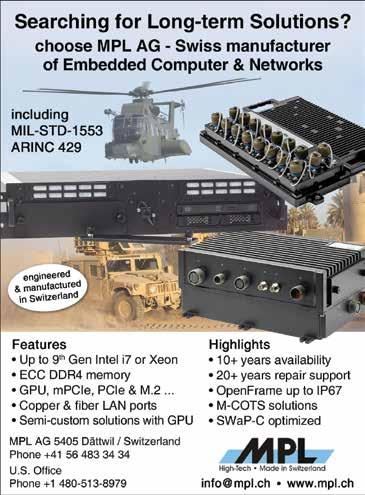
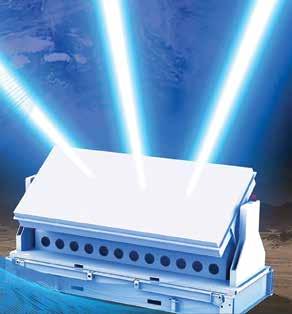
“This agreement with Mercury represents the first entrance into high-rate manufacturing for BADGER,” said Jonathan Moneymaker, BlueHalo’s Chief Executive Officer. With every milestone for the SCAR program, we’re ensuring our nation will maintain its strategic advantage in space. At each step, Mercury is a trusted partner whose signal processing hardware contributes to BADGER’s unmatched performance.”
Minneapolis Company Driving Advancements in National Defense and Aerospace Electronics Announces Strategic Brand Evolution to Sharpen Focus on Innovation and Growth
With an eye towards the future and a dedication to innovation, New Wave Design and Verification, LLC proudly unveils a significant milestone in its corporate narrative: a strategic evolution of its brand identity under the DBA name, New Wave Design. This change signifies a refinement of the company’s brand and a reaffirmation of its commitment to excellence, innovation, and the core mission and values that have guided its journey thus far.
Marti Nyman, President and CEO of New Wave Design, expressed enthusiasm for this new chapter, “With our transition to New Wave Design, we reaffirm our commitment to solving complex challenges with humility, competence, and technical mastery. This rebranding is more than simplifying our name; it’s a recommitment to our foundational principles and our valued partners, customers, suppliers, and stakeholders.”
This evolution reflects the company’s ongoing efforts to streamline its offerings and focus more intently on delivering the innovative solutions its partners rely on without altering the successful operational structure that has underpinned its collaborations. Importantly, this rebranding ensures operational structure that has supported successful partnerships to date.
This strategic brand evolution marks a significant step in the company’s journey, yet its relationship with partners and stakeholders remains unchanged. New Wave Design is committed to the success and principles that have always defined these relationships, guided by technical mastery, a customer-centered approach, and adaptive teamwork.
COTS Journal | April 2024 8
The INSIDE TRACK
Aitech Enhances Space Technologies Production Through Partnership with LACO Technologies
Thermal vacuum system enables in-house testing functionality and better quality control.
Aitech Systems has expanded its in-house space production and testing capabilities by implementing a thermal vacuum system from LACO Technologies, a leading vacuum and leak testing system manufacturer. This new system enables testing space systems and components under hot and cold temperatures and in vacuum conditions, leading to better quality control and streamlined manufacturing.
As part of a more significant production up-
Coda Octopus Group reports that its Echoscope® Technology is the primary survey tool in the Francis Scott Key Bridge’s ongoing salvage operations
Coda Octopus Group, Inc., a global market leader in 3D/4D/5D/6D imaging sonar technology for real-time subsea intelligence and cutting-edge diving technology, today reported that its Echoscope® technology is being used on ongoing salvage operations. The news highlighting this can be found here.
Commenting on this, Blair Cunningham, CODA’s President of Technology, stated, “We are humbled and pleased that Coda Octopus and its technology can play a part as the primary survey tool in these ongoing operations, and I am pleased


grade, Aitech partnered with LACO to build a custom ‘Space Simulation System,’ also known as the Frontier Thermal Vacuum (TVAC) System. This system includes everything from chambers and ports to stands and PLC. The addition of a chiller allows the system to replicate the extreme temperatures experienced from the launch pad to in-orbit operation.
Ralph Grundler, Director of Space Business Development and R&D of Aitech, said, “By adding LACO’s Frontier System to our space product production process, we’re increasing our in-house efficiency and customer quality. Instead of sending parts out for third-party verification, we can manage this critical aspect of the production process, improving delivery and associated costs.”
Aitech’s long-standing history in the space industry led to the production enhancements that the company is undertaking. Recognizing that its space customers are shifting from components to more integrated systems, the company is building an enhanced manufacturing environment to help manage the different testing needs of customers across all orbit levels and mission durations.
“As a team of dedicated engineers, we collaborated closely with Aitech throughout the entire manufacturing process, sharing ideas and knowledge. This enabled us to jointly develop a system that meets Aitech’s in-house testing requirements, facilitates a more streamlined production environment, and provides quality products in a shorter timeframe,” said Lee Chamberlain, Vice President of LACO Technologies.
that I can be onsite assisting in the ongoing operations. As noted by SUPSALV in the article referred to above, the conditions are challenging and compounded by poor visibility water conditions …the Echoscope® “is the primary survey tool used by div-
ers, with visibility clouded to just one to two feet because of the four to five feet of mud and loose bottom of the Patapsco River.”

9 COTS Journal | April 2024

The INSIDE TRACK
Microchip Technology Acquires Neuronix AI Labs
Innovative technology enhances AI-enabled intelligent edge solutions and increases neural networking capabilities.
Microchip Technology has acquired Neuronix AI Labs to expand its capabilities for power-efficient, AI-enabled edge solutions deployed on field programmable gate arrays (FPGAs). Neuronix AI Labs provides neural network sparsity optimization technology that reduces power, size, and calculations for tasks such as image classification, object detection, and semantic segmentation while maintaining high accuracy.
Microchip’s mid-range PolarFire® FPGAs and SoCs already lead the industry in terms of low power consumption, reliability, and security capabilities. The acquisition of this technology will enable Microchip to develop cost-effective, large-scale edge deployments of components designed for use in computer vision applications on systems that have cost, size, and power constraints and enable a multifold increase in AI/ML processing horsepower on low—and mid-range FPGAs.
“The acquisition of Neuronix AI Labs’ technology will enhance our power efficiency for FPGAs and SoCs deployed in intelligent edge systems that utilize AI/ML algorithms,” said Bruce Weyer, corporate vice president of Microchip’s
FPGA business unit. “Neuronix technology combined with our VectorBlox™ design flow increases neural network performance efficiency and delivers outstanding GOPS/watt performance in our low-power PolarFire FPGAs and SoCs. Systems designers can now architect and deploy small-footprint hardware that was previously difficult to build due to size, thermal or power constraints.”
The acquisition of this technology will allow non-FPGA designers to harness powerful parallel processing capabilities using industry-standard A.I. frameworks without requiring in-depth knowledge of FPGA design flow. The combination of Neuronix AI intellectual property and Microchip’s existing compilers and software design kits allows for AI/ML algorithms to be implemented on customizable FPGA logic without a need for resistor-transition level (RTL) expertise or intimate knowledge of the underlying FPGA fabric. It is also designed to update and upgrade CNNs on the fly without reprograming hardware.
“Neuronix AI Labs has been laser-focused on producing best-in-class neural network acceleration architectures and algorithms that can transform user expectations of size, power, performance, and cost,” said Yaron Raz, CEO of Neuronix AI Labs. “Joining the Microchip team offers us a unique opportunity to scale and align with an FPGA portfolio that has set industry standards for power efficiency.”
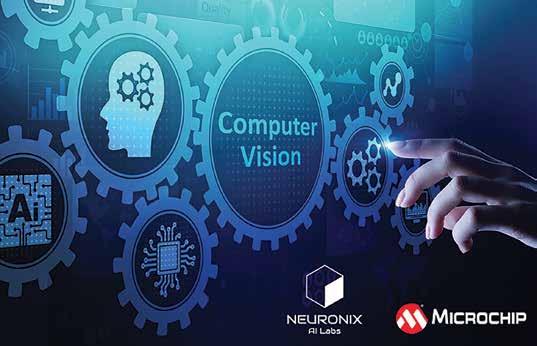
COTS Journal | April 2024 10
The INSIDE TRACK
Infinera G.X. Series Powers Paratus Superhighway Network Between Johannesburg and Europe
Infinera announced that Paratus Group, a leading network provider in Africa, deployed Infinera’s G.X. Series and FlexILS solutions to offer the lowest-latency express route between Johannesburg and Lisbon. The solution delivers services with a latency of 123 milliseconds and supports wavelengths up to 800G. Infinera’s solutions were deployed on the recently completed 1,890-km Paratus express fiber link between Johannesburg and Europe, via Botswana to Swakopmund, where it connects with the Equiano subsea cable from Namibia to Lisbon and on to London and the rest of Europe.
Paratus’ new superhighway offers network operators an unparalleled opportunity for capacity and redundancy where resilience and high-speed performance are required. This guarantees seamless data flow, efficient communications, and un-

interrupted services.
Paratus is the landing partner for the Equiano subsea cable, which offers diverse routing and geographically separated paths. Deploying Infinera’s solutions mitigates possible cable station faults and ensures the network remains intact and fully functional around the clock.
“As a steadfast partner on the ground in Africa, Paratus offers unrivaled wholesale capacity solutions for network operators, exemplified by our advanced technology from Infinera, our infrastructure, and our commitment to offering redundancy,” said Martin Cox, Paratus Group Chief Commercial Officer.
“Our continual investment in creating Africa’s quality network is now extended with the live launch of this superhighway powered by Infinera’s industry-leading technology. This is an exciting time for network operators in South Africa because they can now enjoy the fastest and most robust connectivity from Africa to Europe,” said Schalk Erasmus, CEO of Paratus Group.
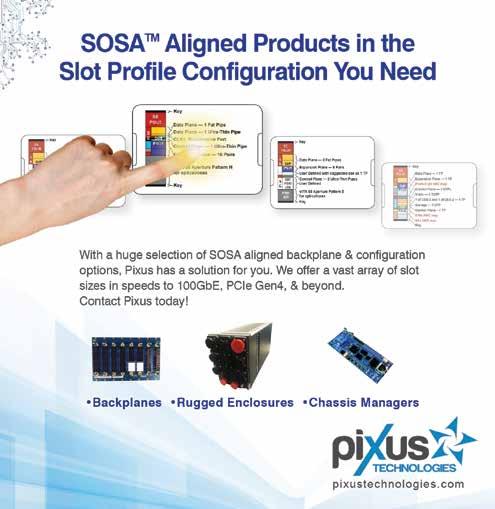
“Deploying Infinera’s G.X. networking solution enables Paratus to leverage the industry’s highest-capacity solution to offer its customers high-performance services while minimizing latency and maximizing reliability,” said Nick Walden, Senior Vice President of Worldwide Sales at Infinera. We are pleased to work with Paratus to launch these new services in the region.”


JOURNAL is re-published each month on
Thanks to our
journal%20#google_vignette Or Contact us; RTC Media 3180 Sitio Sendero, Carlsbad, CA. 92009 Phone: (949) 697-4032 www.rtc-media.com
Last month, more than 18,000 readers downloaded COTS Journal. This pushes our monthly readers to over 50,000 each month. Issuu allows you to look back at all the great issues of COTS Journal and is the perfect resource to find articles on the most interesting topics for you.
partnership with Issuu, more people can enjoy COTS Journal each month. https://issuu.com/search?q=cots%20
11 COTS Journal | April 2024
The INSIDE TRACK
The PCIe 7.0 Specification is now available to Members
Progress continues on the PCI Express® (PCIe®) 7.0 specification, which PCI-SIG® announced at US DevCon in June 2022. Thanks to the hard work of our technical work groups, we are pleased to announce that version 0.5 is now available for member review. This is the official first draft of the specification, incorporating all the feedback we received from members after the release of Version 0.3 in June 2023.
With this release, the PCIe 7.0 specification remains on track for full release in 2025. The PCIe 7.0 specification includes the following feature goals:
• Delivering 128 GT/s raw bit rate and up to 512 GB/s bi-directionally via x16 configuration
• Utilizing PAM4 (Pulse Amplitude Modulation with four levels) signaling
• Focusing on the channel parameters and reach
• Continuing to deliver low-latency and high-reliability targets
• Improving power efficiency
• Maintaining backward compatibility with all previous generations of PCIe technology
PCIe 7.0 technology is aimed at being a scalable interconnect solution for data-intensive markets like 800G Ethernet, Artificial Intelligence/ Machine Learning, Hyperscale Data Centers, HPC, Quantum Computing, and the Cloud. As PCIe technology continues to evolve to meet the high bandwidth demands of these applications, the PCIe 7.0 architecture will focus on channel parameters and reach while improving power efficiency.
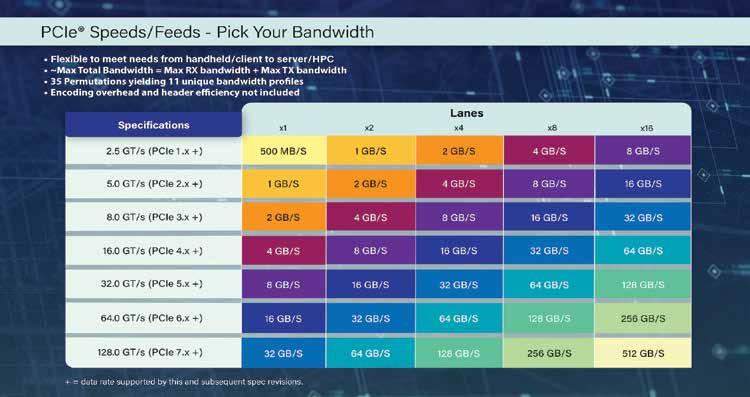

COTS Journal | April 2024 12


Revolutionizing Radar Systems with Software-Defined Radios (SDRs)
SPECIAL FEATURE COTS Journal | April 2024 14
By Brandon Malatest, Founder and Chief Operating Officer Journal
The Emergence of Software-Defined Radios (SDRs) in Radar Systems
Over the past few years, the field of radar systems has experienced a remarkable transformation thanks to the emergence of Software-Defined Radios (SDRs). SDR technology has revolutionized numerous industries, offering flexible and adaptable wireless communication solutions. This article delves into the role of SDRs in radar systems, illustrating their benefits and the impact they have on radar hardware requirements, digital signal processing, and radar systems as a whole.
Understanding Software-Defined Radios
Software-defined radios (SDRs) are communication systems in which software replaces or enhances the functionality traditionally implemented in hardware. They enable dynamic configuration, reprogramming, and reconfigurability, providing unparalleled flexibility in wireless communication. Using software, SDRs can seamlessly adapt to different protocols, frequency ranges, and applications, making them highly versatile.
The Significance of Radar
Radar (Radio Detection and Ranging) is
a technology that employs radio waves to detect and locate objects in its surroundings. It emits radio frequency (RF) signals and analyzes the reflected signals to determine the target objects’ range, angle, and velocity. Radar systems find applications in various domains, including aviation, defense, weather forecasting, and traffic control. Examples of different types of radars include:
• Continuous Wave (CW) Radar emits a constant RF signal and analyzes the frequency shift in the reflected signal to detect targets.
• Pulse-Doppler Radar: Utilizes pulses of RF energy and Doppler processing to detect moving targets while filtering out static clutter.
• Synthetic Aperture Radar (SAR): Creates high-resolution images by combining multiple radar measurements taken from different positions.
• Phased Array Radar: Employs multiple antenna elements to steer the radar beam electronically, providing rapid scanning and improved accuracy.
• Tracking Radar: Focuses on accurately tracking the position and trajectory of moving objects.
Radar Hardware Requirements
Traditional radar systems often necessitate dedicated and specialized hardware components for transmitting and receiving RF signals. SDRs have the potential to simplify and reduce these hardware requirements. The SDR platform is a universal hardware platform that can be reconfigured and repurposed for radar applications. The only limitation is related to the specifications of the SDR, such as tuning range, number of radio chains, and bandwidth. SDRs fulfill the hardware needs of radar systems through the following means:
• Flexible Platform: SDRs serve as flexible, high-performance hardware platforms that can be programmed and reconfigured to perform radar functions. By utilizing softwaredefined capabilities, SDRs eliminate the necessity for dedicated and specialized radar hardware components. This consolidation of functionalities into a single platform simplifies the hardware requirements.
• Software-Configurable Transmitter and Receiver: SDRs can configure transmitter (Tx) and receiver (Rx) functionality through software. This flexibility allows radar systems to adapt to different frequencies, waveforms, and modulation schemes by modifying the software parameters instead of relying on fixed

15 COTS Journal | April 2024
The Latest GaN-on-SiC devices target military communications and counter-IED designs
hardware configurations.
• Wideband Frequency Coverage: Unlike traditional radar systems that require dedicated hardware for specific frequency bands, SDRs can cover a wide frequency range using softwaredefined techniques. This adaptability enables radar systems to operate across multiple frequency bands without requiring different hardware setups, reducing complexity and cost.
The Cyan HB (high bandwidth): provides 3 GHz sampling bandwidth per radio chain and 4 x 100 Gbps of digital backhaulReliable and blazing fast enterprise grade SSD for servers

• Reconfigurable Antennas: SDRs can interface with antennas, including phased arrays and multiple antenna elements. This enables dynamic beamforming and electronically steerable radar beams, enhancing radar system performance and accuracy. The reconfigurability of SDRs facilitates rapid adjustments to antenna patterns and supports tracking and scanning capabilities.
• Modularity and Scalability: SDRs are designed with a modular approach, allowing for easy expansion and scalability. Additional hardware components, such as amplifiers, filters, or specialized peripherals, can be integrated into the SDR platform. This modular architecture provides flexibility in tailoring the hardware setup to meet specific radar system requirements.
• High-Speed Data Interfaces: SDR platforms offer high-speed data interfaces, such as 10/40/100G Ethernet, which enable efficient data transfer between the radar system and external devices. This facilitates real-time data streaming, fast signal processing, and seamless integration with other systems or networks.
• Integration with Digital Signal Processing (DSP): SDRs directly incorporate powerful digital signal processing capabilities on the platform. This enables efficient implementation of radar signal processing algorithms, such as pulse compression, target detection, and tracking. The programmable nature of SDRs allows for quick prototyping and testing of new DSP techniques, accelerating radar system development and optimization.
The Crucial Role of Digital Signal Processing (DSP) in Radar Systems and the Synergy with SDRs
Digital Signal Processing plays a crucial role in radar systems, involving complex
algorithms for signal analysis, target detection, and tracking. SDRs offer powerful processing capabilities, enabling the efficient implementation of radar DSP algorithms.
SDRs
Address Radar Digital Signal Processing (DSP) Requirements
SDRs fulfill radar Digital Signal Processing (DSP) requirements through their powerful processing capabilities and programmable nature, offering the following benefits:
• High-Performance Processing: With advanced processors, such as FieldProgrammable Gate Arrays (FPGAs), SDRs provide high-speed and parallel processing capabilities. These processors can handle complex DSP algorithms required in radar systems, including filtering, modulation/ demodulation, Doppler processing, and target detection.
• Algorithm Flexibility: SDRs allow for software implementation of a wide range of DSP algorithms. This flexibility enables radar systems to adapt and optimize their signalprocessing techniques based on specific requirements and scenarios. New algorithms can be quickly developed, tested, and integrated into the SDR platform, facilitating rapid prototyping and innovation.
• Adaptive Processing: SDRs enable radar systems to adjust their signal processing parameters dynamically based on changing environmental conditions, target characteristics, or operational requirements. This adaptability is particularly beneficial in scenarios where radar parameters need realtime optimization, such as dynamic clutter environments or multiple target situations.
• Reconfigurable Waveforms and Triggering: SDRs facilitate the generation and manipulation of diverse waveforms, including pulse compression, frequency hopping, or chirp waveforms. These waveforms are crucial in radar DSP, enabling range resolution, target discrimination, and clutter suppression. SDRs offer the flexibility to adapt waveform characteristics, modulation schemes, or pulse repetition frequencies to meet specific radar system requirements. Further, highperformance SDRs offer waveform storage on the system and can provide different methodologies for transmitting the different stored waveforms, reducing the complexity of interfacing equipment.
• Efficient Data Processing: SDR platforms are designed to handle large volumes of data generated by radar systems. The highspeed data interfaces available in SDRs enable seamless data streaming and transfer, facilitating real-time data processing. This efficiency ensures the timely processing of radar signals, reducing latency and enabling quick target detection and tracking response times.
• Integration with Radar Libraries and APIs: SDR manufacturers often provide software libraries and Application Programming Interfaces (APIs) tailored explicitly for radar applications. These resources include predeveloped DSP functions, signal processing blocks, or libraries for radar-specific algorithms. Integrating these tools with the SDR platform simplifies the implementation of radar DSP, reducing development time and ensuring optimized performance.
By utilizing the processing capabilities and
COTS Journal | April 2024 16
programmability of SDRs, radar systems can efficiently implement and adapt a wide range of DSP algorithms. This allows for enhanced signal processing performance, improved target detection and tracking accuracy, and the ability to address complex radar scenarios effectively. SDRs provide the flexibility and computational power to handle demanding DSP requirements in modern radar systems.
Benefits of Using SDRs for Radar
There are many benefits of utilizing SDRs for radar systems as they meet and exceed the hardware and DSP needs. There are, however, additional benefits that are beyond just meeting the hardware and software/firmware requirements, which include:
• Flexibility and Adaptability: SDRs allow for easy reconfiguration and software upgrades, enabling radar systems to adapt to evolving requirements and changing operational environments.
• Cost Reduction: SDR platforms eliminate the need for multiple specialized hardware systems, resulting in cost savings in procurement, maintenance, and logistics.
• Rapid Prototyping: SDRs facilitate the quick implementation and testing of new radar functionalities and algorithms, accelerating the development cycle.
• Enhanced Performance: SDRs offer highperformance processing capabilities, enabling advanced signal processing techniques and improving radar system performance and accuracy.
• Future-Proofing: With SDR technology, radar systems can stay updated with the latest advancements in wireless communication by simply updating the software, extending their lifespan, and avoiding obsolescence.
Software-Defined Radios have revolutionized the field of radar systems by providing flexibility, adaptability, and cost-effectiveness. With SDRs, radar systems can leverage the power of software to enhance performance, simplify hardware requirements, and enable rapid prototyping. As SDR technology advances, we can expect even more innovative applications and improved capabilities in radar systems, leading to safer and more efficient operations across various industries.
Per Vices Corporation is a leader in softwaredefined radios with extensive experience integrating SDRs into radar systems for new projects and service life extension programs (SLEPs). Contact us at solutions@pervices.com to learn more about how we can help with your radar projects.

Flexibility and Adaptability: SDRs allow for easy reconfiguration and software upgrades, enabling radar systems to adapt to evolving requirements and changing operational environments.
Flexibility and Adaptability: SDRs allow for easy reconfiguration and software upgrades, enabling radar systems to adapt to evolving requirements and changing operational environments.
17 COTS Journal | April 2024



Celebrating 50 Years of American Excellence:
Celebrating 50 Years of American Excellence:
and Otto Fest’s
Enduring Legacy
Enduring Legacy
By Buck Biblehouse, Senior Editor
OTEK
ADVERTORIAL
OTEK
and Otto Fest’s
OTEK Corporation proudly stands as an emblem of American ingenuity and perseverance in the dynamic realm of instrumentation and measurement technology. As the company marks its illustrious 50th anniversary alongside the esteemed Otto Fest, the narrative of relentless innovation, unwavering dedication, and staunch commitment to excellence takes center stage.
At the nucleus of OTEK’s triumph lies its formidable intellectual property (IP) arsenal, comprising a remarkable array of 18 leading patents and two pending. These patents, spanning groundbreaking analog meter direct replacement innovations to cutting-edge digital instrumentation solutions, epitomize OTEK’s relentless pursuit of advancement and steadfast dedication to redefining industry benchmarks. They showcase the company’s technological prowess and underscore its visionary outlook and commitment to pushing the boundaries of possibility.
A cornerstone of OTEK’s ascent to prominence has been the unwavering support it has garnered from industry peers and collaborators. Through steadfast partnerships and alliances forged over the years, OTEK has earned the trust and admiration of its customers, solidifying its position as a preeminent provider of innovative solutions that consistently surpass expectations. Established on the principle that the most challenging problems necessitate the most straightforward solutions, OTEK is a leader in the field of innovative solutions.
Central to OTEK’s ethos is the indelible imprint of its visionary leader, Dr. Otto Fest. Infused with a relentless pursuit of excellence, Dr. Fest has cultivated a corporate culture steeped in integrity, dedication, and customercentricity principles. This culture permeates every facet of OTEK’s operations, ensuring that the company remains unwaveringly committed to delivering unparalleled value and reliability to its clientele. Dr. Fest proudly conveys, “OTEK guarantees all its products for life—not just the product itself, but the company! When used according to specifications, there is no reason for our products ever to fail.”
Dr. Fest’s unyielding dedication to OTEK’s clientele and the various industries it serves is ingrained deeply within the fabric of OTEK’s identity. Dr. Fest, alongside his proficient and innovative team, has become renowned for their willingness to embrace challenges head-
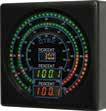









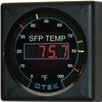
on, customizing their industry-leading digital measurement solutions despite seemingly insurmountable challenges. Their commitment to innovation and problem-solving has led one impressed customer to coin OTEK the moniker affectionately “the digitizers,” lending further credibility to Dr. Fest’s commitment to his esteemed technology.
Dr. Fest’s profound love for family, heritage, and his adopted homeland of the United States resonates throughout OTEK’s operations. Since 1974, OTEK has stood unwavering by the side of the military, demonstrating steadfast support. In the beginning, the US military entrusted OTEK with the development of its pioneering “flatpack” digital meter, a revolutionary creation that remains unparalleled to this day. Remarkably, these meters continue to serve our nation’s defense forces flawlessly, a testament to OTEK’s enduring commitment to excellence and reliability in military technology.
At the heart of Dr. Fest’s leadership philosophy lies a steadfast commitment to prioritizing people above all else. Whether it’s his unwavering dedication to his family, friends, or employees, Dr. Fest’s emphasis on fostering meaningful relationships underscores OTEK’s human-centric approach to business. In an era characterized by rapid technological advancement, OTEK’s enduring success is a testament to the transformative power of people-first leadership and an unwavering commitment to excellence. His journey began in 1976, shaping DIN Standards and lecturing across Germany. Transitioning to NASA, he was pivotal in multiple Apollo missions, contributing to landing a man on the moon.
As OTEK celebrates its 50th anniversary alongside the remarkable legacy of Dr. Otto Fest, the journey of innovation, integrity, and impact continues unabated. Guided by a vision of excellence that remains as resolute as ever, OTEK stands poised to embark on the next chapter of its storied history, propelled by the spirit of American ingenuity and the enduring legacy of Otto Fest, a true patriot in every sense of the word.

4016 E. Tennessee St. Tucson, AZ 85714 USA
Sales@otekcorp.com
520-748-7900 • Fax: 520-790-2808 877-227-6835

The Role of Secure Data Storage in Data-driven Decision Making
The Role of Secure Data Storage in Data-driven Decision Making
SYSTEM DEVELOPMENT
COTS Journal | April 2024 19
By Randal Barber, CEO, www.cdsg.com
Introduction
In today’s digital era, organizations from sports teams to large and small businesses to intelligence agencies and the military increasingly rely on data-driven decisionmaking to gain insights, enhance efficiency, and remain competitive. The proliferation of big data and advanced analytics empowers organizations of all stripes to harness information for strategic planning, to optimize processes, and achieve more informed, impactful outcomes in an extremely fast-moving world.
Of course, one should take care that the data going into decision-making algorithms is as clean and relevant as possible. Imagine the negative outcome of running various scenarios or simulations with data that contains information planted by a nefarious actor. An important aspect of maintaining data integrity and availability is secure data storage. Secure storage safeguards critical information from unauthorized access, cyber threats, and data corruption. Reliable storage solutions built with encryption and access controls are fundamental in preserving the reliability, confidentiality, and accessibility of data, which fosters trust in data analysis and decision-making, and provides operational continuity.
This article will explore the role of secure
data storage in having authentic, reliable data available for mission-critical, data-driven decision-making.
The Evolution of Computer-Based Decision-Making
Decision-making processes in business and the military have evolved alongside societal changes. Ancient commerce thrived on individual intuition, while military leaders relied first on instinct and later on hierarchical structures as their armies grew. The Renaissance introduced structured methodologies, emphasizing logic and reason. The Industrial Revolution brought systematic approaches to both domains, laying the foundation for evidence-based decision-making. As we fast forward to the 20th century, computing changed the dynamic, with its ability to sift through previously incomprehensible amounts of data. The work of ancient Egyptians introduced the notion of algorithms. The evolution of mathematics throughout the centuries led to computerized data-driven decision-making, beginning with the work of Muhammad ibn Musa al-Khwarizmi, known as the “father of algebra”, through Gottfried Wilhelm Leibniz’s work in developing logic in a binary system, Charles Babbage’s creation of the first mechanical computer, Ada Lovelace’s development of the computer program, and
In the modern era, data-driven decision-making prevails, transforming strategies in business, government, and military operations.
Alan Turing’s invention of the modern computer and stored program (i.e., storage) architecture still in use today.
In the modern era, data-driven decisionmaking prevails, transforming strategies in business, government, and military operations. This shared evolution reflects the broader influence of technology, globalization, and changing societal norms on decision-making processes in these critical sectors.
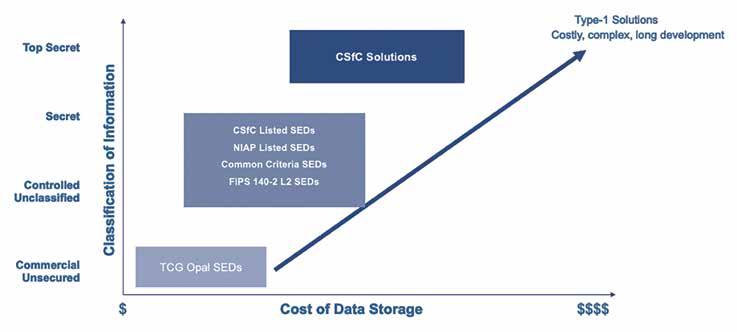
20 COTS Journal | April 2024
A Diagram maps self-encrypting drive types, security, and cost.
In the digital age, organizations increasingly rely on data analytics, leveraging vast datasets to inform strategic choices. This transition signifies a departure from intuition-based decisions, emphasizing the transformative power of data in enhancing efficiency, innovation, and overall mission success. Computing and the explosive growth in data-generating devices have both enabled a reliance on data and created challenges due to the need to analyze what can be an overwhelming amount of data in a prescribed, specific timeframe. Weather forecasts, for example, are more precise when using more data, but are only useful if the forecast is generated ahead of the day or time an action needs to take place. The perfect tactical battle plan arriving after the battle is fought is useless.
The increased resolution in sensors and the explosion in the number of devices have created a surge in data volume and complexity posing challenges in data-driven decision-making. Organizations wrestle with effective data management, quality assurance, and extracting meaningful insights. The demand for advanced analytics and secure infrastructures amplifies and underscores the need for adept strategies to harness the potential of expanding datasets in informed decision processes.
The Need for Decision-Ready Data
Accumulating data to work with is one thing, but having the right data and being

The M.2 22110 PCIe Gen 4 x4 NVMe Enterprise SSD, 7.68TB
Reliable and blazing fast enterprise grade SSD for servers
decision-ready is another. Decision-ready data is processed, well-structured, accurate, and tailored for swift decision-making. It streamlines the process by offering relevant insights, thus speeding decisions. This data is the outcome of meticulous preparation, analysis, and validation for reliability.
In a military setting, using inaccurate or incomplete data in decision-making can have severe if not catastrophic consequences. Erroneous data may lead to misguided tactical
or strategic moves, compromising mission success and risking the lives of personnel. Inaccurate intelligence can result in poorly planned operations, inadequate resource allocation, and increased vulnerability. Military leaders prioritize accurate and complete data to ensure precision, effectiveness, and the safety of warfighters during the planning and execution of operations.
Data-driven decision-making is highly productive when the data sources are suitable

COTS Journal | April 2024 21
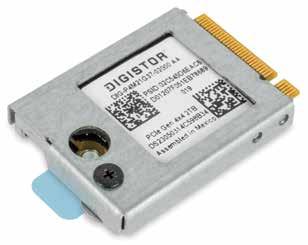
to the problem to be solved and are trusted and accurate; when the data can be transported securely to where the analysis will take place, and when the proper tools are used to communicate the results. Securing the data to be used—ensuring it is recorded in an encrypted storage medium is a crucial step to keeping the data untouched by threat actors.
Secure Data Storage: Foundation for Decision-Ready Data
In the landscape of secure data storage solutions, certifications, validations, and listings matter. For example, the National
The M.2 2230 PCIe Gen 4 x4 NVMe Removable Drive for Dell Latitude 7230 Rugged Extreme Tablets, 2TB
Institute of Standards and Technology (NIST) FIPS validation assures that the cryptographic modules used in a self-encrypting drive (SED) adhere to rigorous security standards, reducing vulnerabilities and the risk of unauthorized access to sensitive data. Complying with the international Common Criteria (CC) extends the certification of encryption modules used in SEDs to an international audience. In the United States, Common Criteria validation is administered by the NSA-sponsored National Information Assurance Partnership (NIAP). The highest tier of listing for off-the-shelf SEDs is the NSA Commercial Solutions for Classified (CSfC)
program. CSfC-listed components are approved for use in secure storage solutions for top secret information.
Access controls and authentication measures, including pre-boot authentication (PBA), multifactor authentication (MFA), and biometrics, further ensure the integrity of data destined for decision-making algorithms. Complementing these, backup and recovery strategies that employ regular automated backups and offsite storage, serve as a safety net against data loss.
Emerging cybersecurity threats, such as sophisticated ransomware attacks, supply chain vulnerabilities, and Artificial Intelligence (AI)-driven threats, pose a constant menace to data integrity. These risks, including phishing, insider threats, and emerging technologies like deepfakes, can compromise data through unauthorized access, manipulation, or destruction. Safeguarding data and data integrity requires proactive measures like advanced encryption, robust access controls, and resilient backup strategies, that are continuously monitored in the face of evolving cyber threats.

22 COTS Journal | April 2024
Looking ahead, the integration of AI and ML technologies promises to enhance data storage security, providing proactive threat detection and adaptive measures. Looking ahead, the integration of AI and ML technologies promises to enhance data storage security, providing proactive threat detection and adaptive measures.

Future Trends in Secure Data Storage for Decision-Ready Data
AI and machine learning (ML) will play a pivotal role in bolstering data storage security. These technologies enable proactive threat detection, real-time anomaly identification, and adaptive security measures. By continuously learning and adapting, AI and ML enhance the resilience of encryption, access controls, and authentication systems, fortifying data storage against evolving cyber threats.
Another emerging trend is the growing requirement for FIPS-certified, enterprise-class SEDs. FIPS-certified SEDs, especially with PBA features, have become almost de rigueur in laptops, desktop computers, rugged laptops, and rugged tablets. For the same reasons that data in client devices must be securely encrypted, SEDs are becoming necessary in server environments, especially those that are separated from larger infrastructure, such as servers deployed on the military tactical edge and in other edge usage such as finance, telecom, and IoT infrastructure applications.
Conclusion
The evolution of decision-making processes in the digital age demands a strategic focus on secure data storage to ensure mission-critical, data-driven decision-making. Organizations, including the military, must prioritize the reliability, confidentiality, and accessibility of their data. Implementing secure storage solutions, such as those that include NIST FIPSvalidated encryption modules and adherence to Common Criteria, forms the foundation for trusted decision-ready data. Continuous monitoring, robust access controls, and resilient backup strategies are imperative to safeguard against emerging and rapidly evolving cybersecurity threats.
Looking ahead, the integration of AI and ML technologies promises to enhance data storage security, providing proactive threat detection and adaptive measures. Additionally, the growing demand for FIPS-certified, enterprise-class SEDs underscores the need for advanced and secure storage solutions in diverse operational environments.

As President and CEO of CDSG, Randal oversees all aspects of business for the secure data storage provider, including national and international distribution, product development, sales and marketing, and financing operations. Randal was a key player in the purchase of the company from Logitech International in late 2002, bringing to the firm 20 years of experience in growth technology companies. He most recently founded and served as CEO and Director of PANELVIEW Inc., a leader in enhancements for flat panel display optics, and Graymor Coatings Inc., which supplied coating services for PANELVIEW.
Early in his career, Randal served as Development Engineer and Electronic Design Engineer for such tech companies as Tektronix Inc., Synergy Dataworks/Mentor Graphics, Xytec and Floating Point Systems. Randal holds a bachelor’s degree in electronic engineering from Oregon State University. He co-founded and manages the Graymor Charitable Foundation, an organization that provides funding for humanitarian, education, and Christian outreach projects around the world.
COTS Journal | April 2024 23
About the Author
April 2024 COT’S PICKS
Teledyne FLIR IIS announces a new stereo vision product for highaccuracy robotics applications
Bumblebee X is the latest GigE-powered stereo imaging solution, delivering high accuracy and low latency for robotic guidance and pick-andplace applications.
Teledyne FLIR IIS is pleased to announce the Bumblebee® X series – an advanced stereo vision solution built on our best-in-class stereo vision portfolio. Our legacy of stereo vision solutions started over 25 years ago with Point Grey
tualized a new industrial stereo camera, Bumblebee X, and software, Spinnaker® 3D, that offers a comprehensive solution with onboard processing to build successful systems for warehouse automation, robotics guidance, and logistics.
“We’re thrilled to announce the release of Bumblebee X, a new comprehensive solution for tackling complex depth sensing challenges with ease,” said Sadiq Panjwani, General Manager at Teledyne FLIR IIS. Our team’s extensive stereo vision expertise and careful attention to customer insights have informed the design of the hardware, software, and processing at the core of Bumblebee X. With high accuracy across a wide
range of distances, this solution is perfect for factories and warehouses.”
Bumblebee X delivers on the essential need for a comprehensive, real-time stereo vision solution. Customers can test and deploy depth sensing systems that work up to ranges of 20 meters with the comprehensive baseline solution. The low latency makes it ideal for real-time applications such as autonomous mobile robots, automated guided vehicles, pick and place, bin picking, and palletization.
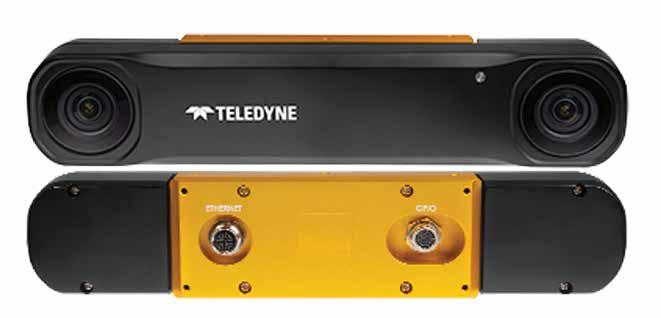
mPCIe-based Rugged Mezzanine I/O Modules
AcroPack® mPCIe-based rugged mezzanine modules deliver maximum I/O density when used with AcroPack carrier cards for PCIe, VPX, XMC, CompactPCI® Serial, PCIe/104, or Mini-ITX systems systems.
Mix and match different AcroPack module types on one carrier for custom applications.
AcroPack Advantages and Features
• A/D, D/A, Ethernet, counter/timers, Communication
• (Ethernet, serial, MIL-STD-1553), digital I/O and FPGA functions
Key features include:
• Factory-calibrated 24 cm baseline stereo vision with 3 MP sensors for high accuracy and low latency real-time applications.
• IP67 industrial-rated vision system with ordering options of color and monochrome, different field-of-views, and 1GigE or 5GigE PoE
• Onboard processing to output a depth map and color data for point cloud conversion and colorization
• Ability to trigger an external pattern projector and synchronize multiple systems together for more precise 3D depth information
• Software library with articles, example code, and Windows, Linux, and Robotics Operating System (ROS) support
Teledyne FLIR flir.com
• cPCI Serial, Mini-ITX Com Express Type 10, PCIe, XMC or VPX carriers
• Low-power consumption
• -40 to 70°C standard operating temperature
Acromag acromag.com
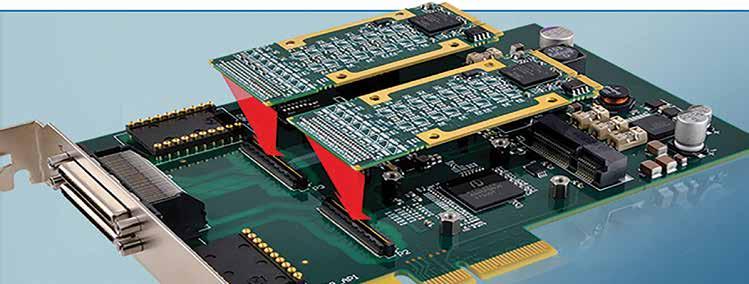
24 COTS Journal | April 2024
COT’S PICKS
New modular all-in-one solutions have thousands of configuration options to provide reliable data access and visualization in challenging environments
Industrial computer hardware manufacturer and solution provider OnLogic (www.onlogic.com) has unveiled their new Tacton Series of rugged panel PCs and industrial touchscreen displays, designed to empower innovators with the tools they need for advanced automation, industrial Control, and data visualization. Tacton was developed from the ground up by OnLogic as a reliable, highly configurable, secure, and easy-to-install HMI solution for manufacturing, warehousing, energy management, and transportation applications.
“The Tacton Series gives users the best of both worlds in an all-in-one touchscreen computer,” said David Zhu-Grant, Product Management Lead at OnLogic. “We heard from users that they needed a highly configurable system but didn’t lock them into paying for features they didn’t need. We took that input and designed a solution that can be customized to the unique requirements of a given project, is easy to install, and is built to last. We’re excited to see how innovators put Tacton Panel PCs to use, empowering next-generation edge solutions.”
Core Systems shows their breath and width of manufacturing with the release of a rugged Voip Telephone
Introducing the Rugged Cisco 8851 Telephone, a military-grade communication solution designed by Core Systems to thrive in challenging environments. Whether powered by PoE or AC, this phone guarantees dependable Communication even in the harshest conditions. Retaining all the features of the standard Cisco 8851 model, the Rugged 8851 Telephone ensures durability and performance under extreme circumstances.
Certified as VoIP Class-A and crafted explicitly for military settings, this ruggedized phone delivers steadfast Communication in adverse conditions, offering the full functionality of the Cisco 8851 within its robust chassis.
Core Systems is a leading manufacturer of top-tier rugged computers and displays. Based in

Highly-configurable Rugged Panel PCs & Industrial Displays
The Tacton TC401 is a rugged all-in-one Panel PC with integrated AI acceleration capabilities provided by a range of Intel® 12th Gen processors. Customization capabilities augment an extensive I/O coastline via OnLogic’s proprietary ModBay™, which can be used to add additional connectivity to support specific user application requirements.
To provide additional flexibility in compute performance and application, OnLogic also announced the Tacton TN101, a line of standalone displays that can be used with any of OnLogic’s other industrial or rugged computers.
Engineered for Challenging Environments
To help ensure reliability in a wide range of installation environments, Tacton Series displays are UV and vibration-resistant, have a broad input power and wide operating temperature range, and are available with ignition sensing for in-vehicle installations. The projected capacitive screens offer a 7H hardness, multi-touch support, optical bonding, and anti-water technology to prevent unintended inputs during washdown.
Premium Industrial Displays
The Tacton Series’ modular design allows users to select from 18 different screen options for the TC401 or TN101. Screens are available in
Poway, California, our 85,000+ square foot facility houses engineering, assembly, testing, and metal fabrication capabilities. Trusted worldwide, our rugged products are deployed across ground vehi-
3 sizes: regular or high brightness, resistive or projected capacitive touch interface, and IP66 or IP69K water—and dust-ingress-protected front bezels. They can also be configured with an optional integrated front-facing camera.
Built-in Security Features
To deter unauthorized access, the Tacton TC401 has built-in intrusion detection, which allows users to be notified when the control cabinet in which Tacton is installed is opened. An optional port blocking and cable securing bracket with onboard power supply mounting points help to protect against access to unused ports and secure cables to reduce the risk of accidental disconnection. Onboard TPM 2.0 hardware security helps protect data by providing secure boot, platform integrity monitoring, and remote attestation capability.
Engineered for Ease of Installation and Use
The Tacton Series can be installed via standard VESA mount or panel mounted using OnLogic’s patent-pending toolless, ruggedized, locking panel mounting clips designed to prevent unscrewing in vibration-prone installations. A unique front mounting bar helps speed installation, while a corner-mounted LED light pipe on the system’s rear provides status light visibility from multiple viewing angles.
OnLogic onlogic.com
cles, aircraft, and maritime installations.
Core Systems core-systems.com
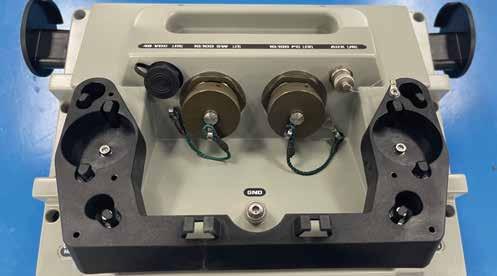
April
2024
COTS Journal | April 2024 25
April 2024 COT’S PICKS
Concurrent Technologies Launches New VME Board
Concurrent Technologies, a designer and manufacturer of leading-edge computer products, systems, and mission-critical solutions used in high-performance markets by some of the world’s major OEMs, announces the launch of Rhea, a further addition to its VME range of embedded processor boards.
Coincident with the launch of Intel’s latest Atom processor, the Company has released the Rhea VME single-board computer to harness this latest technology for customers looking for a simple, cost-effective upgrade.
VME is a standard that has existed for many years and has been widely deployed in various industrial, research, semiconductor process control, transport, medical, and defense applications worldwide. While no longer the cutting edge of technology, VME continues to be a widely installed architecture, particularly in the defense market, and many organizations have designed their plat-
Avassa and OnLogic: Combining Software and Hardware for Industrial IoT Edge Excellencen
Edge application management and operations platform provider Avassa (https://avassa. io/) and global industrial computer manufacturer OnLogic announce a partnership to offer a full-stack edge solution combining hardware and software tailored for industrial IoT edge environments.
Avassa is an industry expert in container application and AI model management at the edge. Their edge platform addresses use cases such as site installation and deployment, as well as monitoring and securing applications that operate in many tens, hundreds, or thousands of locations. OnLogic is a global market leader in highly configurable, solution-focused industrial computer manufacturing. Their systems operate in the world’s most rugged environments, allowing customers to solve complex computing challenges across numerous verticals. Combining OnLogic and Avassa, organizations benefit from a fullstack edge solution spanning hardware and software that is purpose-built for edge environments.
“Avassa and OnLogic are truly great match-
forms around this standard. Upgrading their computing capability while remaining within the VME environment is crucial to time and cost efficiency. Customers can remove their existing boards and plug a new one into the same slot.
By continuing to support the VME standard, Concurrent is responding to its customers’ needs and extending the revenue-generating lifecycle of
Rhea offers a wide range of input and output interfaces needed for its target applications. It also enables customers to benefit from the latest security features. It presents a valuable upgrade path when up-to-date VME computer boards are increasingly difficult to source from major vendors.
Concurrent Technologies gocct.com

es for several reasons. We often talk to customers about building a new generation of IoT edge infrastructure, including edge computers and a software platform for managing edge and IoT applications. Like the Avassa platform, OnLogic is edge-native and purpose-built for distributed edge and IoT environments. Together, we can offer customers a full-stack solution that excels in solving the unique challenges of edge,” says Carl Moberg, Avassa’s CTO.
Heading into the era of cloud-connected IoT
The realm of Industrial IoT is undergoing a significant transformation, with a precise movement towards the intelligent edge with fully containerized applications, primed for the future of more easily managed and cloud-connected industrial IoT.
This requires next-generation combined software and hardware industrial IoT solutions that meet and exceed these demands. Through their partnership, Avassa and OnLogic deliver a full-stack solution that enables enterprises to utilize IoT systems fully, benefit from hardware made for harsh, rugged environments, and manage industrial IoT applications comfortably, centrally, and securely.
Purpose-built for the IoT Edge
Avassa and OnLogic provide solutions explicitly engineered for the IoT edge. OnLogic’s industrial computers are fanless, rugged, resistant to extreme temperatures, and built for harsh industrial environments. Avassa’s Edge Platform is purpose-built to manage and operate container applications running at the edge. It offers unique functionality for edge-specific challenges, such as targeted deployments, OS upgrades, and offline application capabilities.
“We’re thrilled to partner with Avassa to help provide enterprise customers a comprehensive solution for containerization and orchestration for modern edge deployments,” said Kim Wasserman, OnLogic VP of Product Management. “Their software solutions complement our rugged and reliable hardware for IIoT applications and beyond. Like us, Avassa does everything it can to empower customers on their journey to innovation at the edge. We’re excited to offer OEMs, end users, and solution providers a more comprehensive solution for managing applications at the edge and turning their data into actionable insights and ROI.”
OnLogic onlogic.com
26 COTS Journal | April 2024
April 2024 COT’S PICKS
Vislink Launches DragonFly V: A Revolution in Miniaturized Wireless Video Transmission
Vislink Technologies, Inc.’s delivery and management of high-quality live video and associated data in the media and entertainment, law enforcement, and defense markets announced the release of DragonFly V, an ultra-compact HEVC HDR COFDM transmitter. This groundbreaking product is engineered to revolutionize live video capture from Point-of-View (POV) cameras, UAVs, body-worn devices, and more, offering high-quality, real-time video transmission in a miniature package. Vislink will debut DragonFly V at NAB 2024 (details below).
ful punch, delivering high-definition HDR video transmission with low latency and supporting video formats up to 1080P-50/60 HDR.
Mickey Miller, CEO of Vislink, said, “With the launch of DragonFly V, we are redefining the boundaries of live broadcast technology. This tiny yet mighty device exemplifies Vislink’s commitment to delivering innovative, high-performance solutions that our customers have come to expect. DragonFly V is the epitome of advanced engineering, designed to empower broadcasters and content creators to capture the world from angles never before possible.”
DragonFly V’s versatility is unmatched. It offers HD/SDI or HDMI input options and caters to various applications, from sports and entertainment to public safety. Its energy-efficient design ensures extended operation times, which is critical for remote and dynamic live broadcasting environments.

DragonFly V stands out in the market with its small size and weight under 55 grams, making it one of the lightest and most portable transmitters. Despite its small stature, it packs a power-
New VPX 2-slot Backplane Speeds Lowcost Development of Systems Using VITA 62 Power Designed with power studs to feed power to connected backplanes in the same chassis
Elma Electronic Inc. now offers a 3U OpenVPX 2-slot backplane with a VPX power and ground slot and a VITA 62 power supply slot that facilitates the development and deployment of systems requiring a VITA 62 power supply.
The rugged backplane features a VITA 46/65-compliant pass-through power and ground slot that can be SOSA aligned and suitable for custom designs. This makes it ideal for a range of harsh environments in embedded applications. The rear I/O of the VITA46/65 slot can be used for a rear transition module (RTM) or cabling.
Designed with power studs for both input and output power, the new backplane can serve as a power source to other connected back-
Key features include:
• Innovative Miniature Design: DragonFly V offers unparalleled portability and ease of use without sacrificing quality or functionality.
• HEVC HDR Encoding: capable of handling up to 1080P HD video, it provides crisp, clear im-
planes within the same chassis. The board also comes with a header for various I/O signals, including voltage sense, current share, IPMB interface, inhibit, enable, and fail.
Aside from the assigned pins for 3.3V, 5V, and 12V power, all remaining pins are user-defined. The fully populated rear connectors are accessible via Elma’s slot-to-slot or slot-to-I/O bulkhead cable assemblies, and the backplane comes with defined utility and ground planes.
The new board features selectable geographical addressing via a DIP switch and a 12-layer design to IPC Class 3, with 1 oz copper outer layers and 2 oz copper inner layers. The utility plane is implemented in the P0 pin, and the system management bus is routed to two of the board’s headers. The backplane can be used for 270 VDC operation in high altitudes with insulators or fins as a custom assembly.
Elma Electronic elma.com
ages essential for modern broadcast workflows.
• Flexible Connectivity: Its dual HDMI and SDI inputs ensure compatibility with various cameras.
• Ultra-Reliable Transmission: with a 50mW COFDM output power, DragonFly V enables stable and secure video even in the most challenging conditions.
• Low Power Consumption: for efficient and extended use.
• Comprehensive Control: features like WiFi control and RS232 remote Control add convenience and flexibility to operations.
• DragonFly V is poised to set a new standard for live broadcast equipment, offering unprecedented perspectives, reliability, and performance in the most demanding bespoke portable applications, including electronic news gathering, drone videography, and live sports broadcasting.
“We believe DragonFly V will become an indispensable tool for professionals looking to push the limits of live video broadcasting,” added Miller. “Its launch is a game-changer for the industry, and we are excited to see the remarkable content our clients will create with this technology.”
Vislink Technologies vislink.com
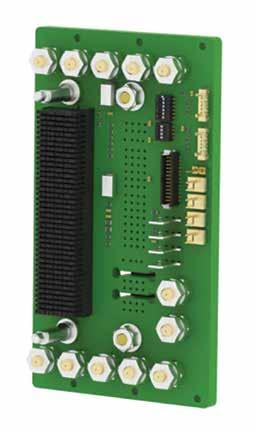
COTS Journal | April 2024 27
April 2024 COT’S PICKS
Empowering Innovation: Abaco Introduces FMC300 for Cutting-Edge SDR and EW
AMETEK Abaco Systems introduces the FMC300 Wideband Low Latency FMC Module, a game-changer in embedded computing. Tailored for Software Defined Radio (SDR), electronic warfare(EW), digital radar, and test & measurement applications, the FMC300 integrates high-performance Analog-to-Digital Conversion (ADC) and Digital-to-Analog Conversion (DAC) capabilities into a compact form factor based on the VITA 57.4 industry open standard.
Leveraging Analog Devices AD9082 and AD9081, the FMC300 delivers unmatched performance with multiple channels offering up to 12-bit 6 GSPS RF ADC and up to 16-bit 12 GSPS RF DAC through a JESD204B/C interface. This module is optimized forlow-latency, high-sampling rate operations, empowering advanced SDR, EW, and
Astronics Corporation Launches Next Generation Typhon T-400 Ku SATCOM System
Astronics Corporation launched the Typhon T-400 Series system, representing the next generation in Satellite Communications (SATCOM) connectivity technology. The Typhon T-400 Series is designed to seamlessly operate on any GEO-based Ku Satellite network, effectively addressing challenges associated with the high cost of equipping
Digital RF Mem ory (DRFM) systems and boasts an impressive 7GHz of usable analog bandwidth.
When paired with Abaco’s state-of-the-art FPGA carrier cards, such as the VP891 SOSA-Aligned Xil inx® Virtex™ UltraScale+™ FPGA carrier, the FMC300 gives customers the platform to solve the most difficult challenges when designing modern Digital Signal Processing (DSP) systems.
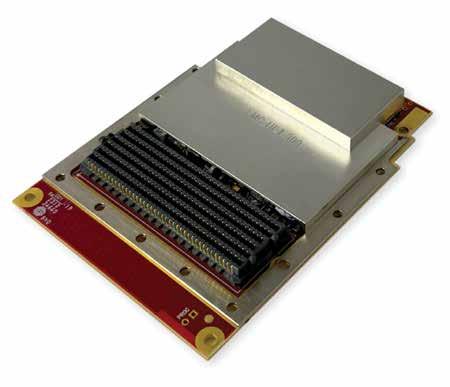
Simon Collins, Director of Product Management at Abaco Systems, remarked, “The FMC300 empowers customers to overcome the challenges of an evolving program requirements with its modular approach based on open standards in support of SOSA. By seamlessly integrating higher-performance ADC/DAC capabilities like the FMC300 without the need for a complete redesign, system
an aircraft with SATCOM connectivity.
“Astronics continues to lead the way in optimizing connectivity for airborne platforms,” said Mike Kuehn, President of Astronics CSC. “By leveraging cutting-edge technologies and emphasizing installation flexibility, the Typhon T-400 series sets a new standard for connectivity hardware. This innovative system achieves significant optimization by reducing the number of LRUs required from four to two, thereby streamlining installation and substantially cutting down the total flyaway cost.
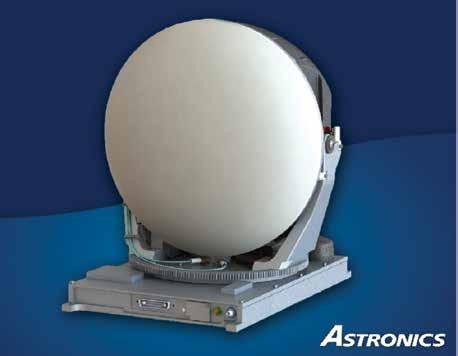
Furthermore, customizable system variants, including a modem-less configuration, offer special mission and military end-users heightened flexibility.”
Advanced satellite technology combined with the innovative Modem Manager (MODMAN), the
options for clock source, sampling frequency, and calibration. Equipped with individual calibration circuits for fine-tuning gain, offset, and phase, as well as advanced monitoring and power-down modes, this innovative module sets a new standard for embedded computing solutions.
AMETEK Abaco Systems abaco.com
Typhon T-400 Series is a streamlined Dual LRU system that provides both ease of installation and cost savings. The system incorporates commonly sourced connectors with low-cost cabling to facilitate a seamless and cost-effective installation process. As a result, the system also enables reduced total life cycle costs.
At the core of the Typhon T-400 series is integrating the iQ800 modem technology from iDirect, a renowned leader in satellite communications. This advanced, future-proofed modem technology ensures optimal connectivity and data transmission capabilities, empowering seamless Communication and the highest available data rates in even the most demanding airborne environments.
One of the standout features of the Typhon T-400 series is the Modem Manager (MODMAN), which boasts a flange mount design and enhanced environmental specifications. This allows for secure mounting in any orientation, both inside and outside the pressure vessel. The antenna can be flexibly mounted on the aircraft fuselage or tail, offering unparalleled installation versatility. Moreover, the system provides options for a modem-less version, seamlessly integrating with external customer-furnished modems for enhanced security applications, ease of export, and flexible system integration.
Astronics astronics.com
28 COTS Journal | April 2024
April 2024 COT’S PICKS
DDC-I and North Atlantic Industries Announce DAL A BSP
Support for Safety-Critical Deos RTOS Running on NAI’s 68PPC2 T2080 Multi-core OpenVPX Single Board Computer
FACE-conformant avionics platform features bounded multi-core response with complete DO-178C/ED-12C DAL A verification for rapid development, certification, and deployment.
DDC-I, a leading supplier of software and professional services for mission- and safety-critical applications, and North Atlantic Industries, a leading provider of embedded systems for mil/aero applications, today announced the availability of DDC-I’s Deos™ DO178C Design Assurance Level A (DAL A) verified FACE-conformant real-time operating system and a DAL A Board Support Package (BSP) for NAI’s 68PPC2 T2080 PowerPC OpenVPX single board computer. The BSP provides complete DO-178C/ED-12C DAL A verification evidence, including high assurance boot, multiple Ethernet channels leveraging the T2080 DPAA, PCIe, SATA flash storage, I2C, serial, real-time clock, watchdog timer, SPI, USB, and GPIO, greatly accelerating the development, deployment, and certification of high-performance safety-critical applications for avionics systems.
DDC-I’s approach to building safety-critical software mirrors North Atlantic’s configuring boards, emphasizing modular, scalable, portable DAL-A verification. Deos utilizes a DAL-A linking loader that allows OS binary components and their artifacts to travel separately. NAI’s Configurable Open Systems Architecture™ (COSA®) utilizes highly modular, portable components that can be added or removed and reapplied to other system configurations with maximum reuse of DAL-A artifacts. This shared commitment to modularity, portability, and reuse enables avionics designers utilizing Deos and the COSA architecture to reconfigure their I/O systems with minimal impact on hardware, software, and DO-178 recertification.
“Our SafeMC multi-core technology and reusable verification evidence make Deos an ideal environment for developing, certifying, and deploying high-performance, FACE-conformant, safety-critical avionics applications targeting the 68PPC2 and COSA architecture,”
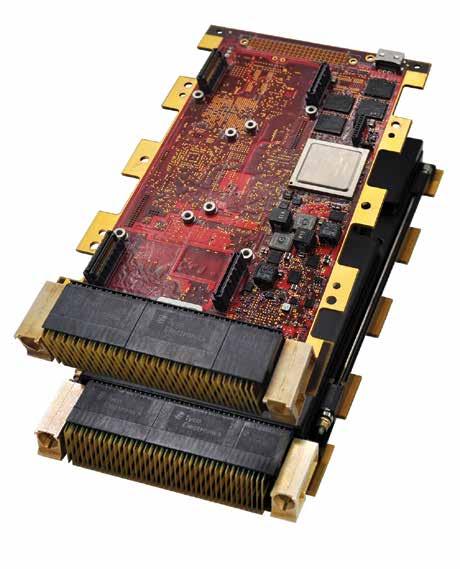
said Greg Rose, Vice President of Marketing at DDC-I. “Our SafeMC technology pro vides unique solutions to address the AC 20-193 multi-core objec tives, delivering best-in-class performance and determinism for safety-critical applications running on NXP PowerPC multi-core pro cessors.” “Deos running atop the 68PPC2 gives avionics devel opers an integrated platform that combines high-performance multicore performance with a best-in-class safe ty-critical RTOS,” added < Lino Massafra, Vice President of Sales and Marketing at NAI. “De velopers requiring the highest level of design assurance now have a rugged, flexible, off-theshelf solution with configurable I/O and DAL-A evidence in a compact, low-power package that accelerates deployment of safety-critical systems.”
Deos is a safety-critical embedded RTOS that employs patented cache partitioning, memory pools, and safe scheduling to deliver higher CPU utilization than other certifiable safety-critical COTS RTOS on multi-core processors. First certified to DO-178 DAL A in 1998, Deos combines DO-178C DAL A artifacts with FACE® Technical Standard support encompassing the Safety Base and Extended Profiles for the Operating System Segment (OSS). The Safety Base Profile features hard real-time response, time, space partitioning, and ARINC-653 and POSIX interfaces. The Safety Extended Profile, which adds support for TCP/IP communications, multi-process support, and expanded POSIX capability (80 extra functions), is a superset of the functionality required by the Safety Base and Security Profiles.
SafeMC technology extends Deos’ advanced capabilities to multiple cores, enabling developers of safety-critical systems to achieve best-in-class multi-core performance without compromising safety-critical task response and
bounded multi-processing (BMP) extension of the symmetric multi-processing architecture (SMP), safe scheduling, and cache partitioning to minimize cross-core contention and interference patterns that affect the performance, safety criticality, and certifiability of multi-core systems. These features enable avionics systems developers to address issues that could impact the safety, performance, and integrity of a software airborne system executing on MultiCore Processors (MCP), as specified by the FAA Advisory Circular AC 20-193.
The 68PPC2 is a 3U OpenVPX™ NXP® T2080 PowerPC single-board computer that can be configured with up to two NAI smart I/O and communications function modules. Featuring an NXP QorlQ® T2080 Quad Core e6500 Processor running at 1.5 GHz and consuming less than 25W, the 68PPC2 is ideally suited for rugged Mil-Aero applications that accelerate deployment of SWaP-optimized systems in air, land, and sea applications. The 68PPC2 has eight Mbytes of DDR3 SDRAM and 32 Gbytes of SATA II NAND Flash. It also features PCIe, USB, I2C, TTL, and RS-232 interfaces and an optional SATA II for external access to up to 2 Gbytes of expansion memory.
DDC-I ddci.com
COTS Journal | April 2024 29
April 2024 COT’S PICKS
The faster, more sustainable route to dedicated high-end 3.5-inch systems
congatec presents the first board-level product in line with its recently introduced aReady. strategy. Application-ready for immediate deployment in industrial use cases, the new 3.5-inch conga-HPC/3.5-Mini carrier board is designed for space-constrained rugged high-performance IIoT applications that are based on COM-HPC Mini modules with extended temperature support from -40°C to + 85°C. The hypervisor and operating system configuration comes pre-installed when combined with the conga-aCOM/mRLP COM-HPC Mini module in the aReady.COM version. A software expansion package for secure IIoT connection is on the roadmap. Developers can boot product bundles and install their applications immediately. As this minimizes the complexity of integration below the application layer and for the diverse IIoT functionalities of embedded and edge computing systems, the solution is also ideal for system integrators.
There are two purchasing options for this new commercial-off-the-shelf (COTS) carrier board. It is an ideal platform for series products starting from small quantities as a pure application carrier board
PX5 Announces Functional Safety
Certification of the PX5 RTOS, Offering Developers a Faster Path to Certification, Reducing Product Liability, Improving Quality and Time to Market
PX5 RTOS is the first RTOS presenting a native POSIX pthread API to be certified by SGS-TÜV Saar

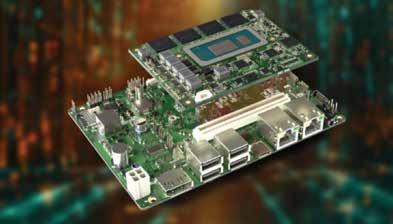
with the conga-HPC/mRLP COM-HPC Mini module. For application-specific designs, the complete aReady. The bundle offers high convenience and design security. For instance, possible configurations can include a pre-installed ctrl X OS from Bosch Rexroth and virtual machines for tasks such as real-time control, HMI, AI, IoT data exchange, firewall, and maintenance/management functions. Both purchasing options suit OEMs looking to develop sustainable system designs based on off-theshelf components. Modular COTS configurations are primarily aimed at OEMs, system integrators, and VARs of smaller industrial product series and families. What makes the solution sustainable is the option to replace only the module when performance and functionality requirements change instead of the entire embedded hardware.
Heralding an application-specific modular embedded computing platform in a 3.5-inch format, both options offer an excellent technological foundation for rapid prototyping and price/performance balancing through processor selection. Customer-specific carrier board variants enable OEMs to realize dedicated designs with minimal
to the highest levels of the IEC 61508, IEC 62304, ISO 26262, and EN 50128 functional safety standards.
PX5, a global leader in high-performance real-time operating systems and middleware, announced off-the-shelf functional safety certification of the PX5 RTOS. Developers can leverage this certification in conjunction with their application software certification to build a safety-certified device for the automotive, industrial, and medical industries. For developers of both safety-critical and non-safety-critical devices, the certified RTOS offers a stable, reliable foundation built to industry best practices to support improved product reliability, security, quality, and time to market.
The PX5 RTOS certifications were performed by SGS-TÜV Saar, the leading accredited, independent Company for testing, auditing, verifying, and certifying embedded software for safety-related systems. The PX5 RTOS has achieved functional safety certification to the highest levels of the IEC 61508, IEC 62304, ISO 26262, and EN 50128 functional safety standards, specifically IEC 61508 SIL 4, IEC 62304 Class C, ISO 26262 ASIL D, and EN 50128 SW-SIL 4. Developers using the PX5 RTOS can leverage the RTOS certification artifacts to save time and money
development effort. This reduces costs, shortens time to market, and secures long-term investments in specific carrier board designs, as upgrades are possible by swapping modules across processor generations and manufacturers. Larger production runs can also be realized cost-efficiently by merging the COM and carrier board.
“Minimizing the integration effort to the greatest extent possible provides immense added value for our customers. From our core Computer-on-Module business perspective, both the COTS carrier boards and the already. Strategy with pre-installed hypervisor, operating system, and IIoT software configurations are important add-on benefits we can now offer customers for our modules. Customer-specific designs tailored through our design-in services are the next step to minimize OEMs’ workloads further,” explains Jürgen Jungbauer, Senior Product Line Manager at congatec.
congatec congatec.com
during application certification.
Only Certified RTOS with Native POSIX
pthread API
As the first RTOS with a native POSIX pthread API, a standards-based API for multithreaded applications developed in C, the PX5 RTOS offers a familiar programming interface for embedded developers. The PX5 RTOS native pthreads implementation supports code portability and reuse while providing a small memory footprint, full multithreading, and hard real-time functionality. The PX5 RTOS includes full development tool support, source code, and royalty-free licensing.
“Functional safety is at the top of the mind for developers of safety-critical devices, and it also impacts security since a device with functional safety vulnerabilities is also easier to compromise,” said William Lamie, CEO of PX5. “Our functional safety certification gives all embedded developers confidence in their application code’s safety, security, and certifiability. And all this is available without compromising core RTOS benefits – the PX5 RTOS is the industry’s smallest, fastest, safest, and most secure.”
PX5
x5rtos.com
30 COTS Journal | April 2024
April 2024 COT’S PICKS
VIAVI Unveils Groundbreaking Advances in 6G and AI Research with Introduction of 6G City-Scale Digital Twin and AI-Native Air Interface
Viavi Solutions Inc. shared milestones in 6G and AI research based on the Company’s 6G Forward Program. As 6G is the first AI-native generation of wireless communications, data sources such as a 6G city-scale digital twin will be vital for training other network elements, such as the 6G AI-Native Air Interface.
6G City-Scale Digital Twin
In 2022, VIAVI announced support for research at the Institute for Wireless Internet of Things and the Open6G cooperative research center at Northeastern University as part of the VIAVI 6G Forward Program. A key aspect of the research was large-scale RF propagation channel modeling based on AI and ML technologies to develop a city-scale digital twin of a 6G network.
The digital twin research has expanded to include:
• Use of AI/ML to augment ray tracing for radio frequency (RF) propagation modeling to drive the digital twin

• Conducting real-world measurement campaigns in the Northeastern Boston campus using the VIAVI Ranger rugged RF capture and playback instrument
• We are incorporating higher-layer KPIs in the digital twin to model network conditions’ effects on application performance effectively.
“Our research collaboration with Northeastern University has led to breakthroughs in the use of AI/ML for radio propagation modeling,” said Dr. Ian Wong, CTO Office, VIAVI. “We believe this research is critical in enabling large-scale network digital twins, which VIAVI is well poised to deliver given our leading network emulation solutions in the lab and network monitoring and optimization solutions in the field, gathering data from actual operator networks.”
“At Northeastern’s Institute for the Wireless Internet of Things (WIoT), we have been using VIAVI’s state-of-the-art testing and measurement equipment to model and deploy high-fidelity digital twins of real-world wireless networks on our Open RAN Digital Twinning platform, Colosseum,” said Professor Tommaso Melodia, Director of WIoT at Northeastern University. “This will facilitate the research, development, and experimentation of AI-driven solutions for 5G and beyond networks in a risk-free digital-twinned world with hardware in the loop.”
6G AI-Native Air Interface (AI-AI)
The AI-Native Air Interface (AI-AI) has appeared as a shift in the conventional methods of developing, standardizing, and commercializing communication technologies. Its goal is to effectively supply data to

Pixus Technologies offers a pluggable Tier 3 SOSA-aligned chassis management module for OpenVPX
The SHM200 chassis manager for OpenVPX complies with VITA 46.11 for system management. The unit comes in 3U and 6U sizes, in VITA 48.1 format for air-cooled systems and VITA 48.2 format for conduction-cooled systems. The Tier 3 chassis manager can plug into a standard 3U VPX backplane slot in the P0 connector position. There are also versions for more I/O that utilize the P1 or P1/P2 connectors. The standard panel interface has RS-232, RJ-45 or SFP, USB, and LEDs.
With monitoring at least six temperature sensors and ten fans, the SHM200 has custom options. There is a fan PWM/Tach control, 16
applications while addressing communication problems and hardware limitations. The neural receiver concept suggests replacing traditional signal processing blocks with trained AI models in the physical layer of wireless communications.
VIAVI has developed and demonstrated its receiver as part of an end-to-end test and training environment to enable comprehensive testing of neural receivers. The base station employs an AI-aided constellation design, where the modulation block is replaced with a neural network to design a custom constellation for the receiver. The VIAVI in-house developed neural receiver is generalizable over various channel models and modulations, delay and Doppler, signal-to-noise ratio (SNR), and other conditions. This is vital for deployment in practical systems. VIAVI used open-source and in-house libraries to implement the transceiver architecture.
“VIAVI continues to explore and develop groundbreaking future generations of wireless technology, and we are at the frontier of AI-native 6G,” said Dr. Stephen Wang, Managing Director, VIAVI Marconi Labs. “From neural receivers to rate-splitting multiple access for semantic networks, our 6G research helps the industry create networks that dynamically adapt to different environments and conditions. We look forward to working with research labs and network equipment manufacturers to accelerate the development of these technologies.”
Viavi Solutions viavisolutions.com

digital inputs and outputs, and a Web interface.
Pixus offers OpenVPX backplanes, chassis platforms, and specialty products. The Company also provides a mezzanine-based Tier 3 SOSA Aligned chassis manager that does not consume a slot.
Pixus Technologies pixustechnologies.com
JOURNAL Interested in getting your copy of Contact us; RTC Media 3180 Sitio Sendero, Carlsbad, CA. 92009 Phone: (949) 226-2023 www.rtc-media.com
COTS Journal | April 2024 31
April 2024 COT’S PICKS
LDRA Elevates Its DevSecOps-Ready Platform with Actionable Security Analysis & Reporting
New security-first capabilities—including extended taint analysis and vulnerability heat maps —help embedded developers remediate critical issues earlier in the lifecycle.
LDRA announced the availability of four new security-first capabilities in the LDRA tool suite: security vulnerability reports, security audits, security reviews, and taint analysis. Each capability digs deep into identifying and remediating critical security vulnerabilities that impact today’s complex and connected embedded software applications. Unlike other software verification, traceability, and standards compliance tools, the LDRA tool suite simplifies analysis results using accessible user-experience techniques to help developers understand the results and integrate them into their DevSecOps processes.
New security-first capabilities—including
Kongsberg Geospatial adds Echodyne Radar to IRIS Terminal
Integrated radar adds immediate value to BVLOS operations
Kongsberg Geospatial (KG), the developer of the IRIS Terminal and IRIS GCS airspace deconfliction solutions, has partnered with Echodyne, the radar platform company, to accelerate and extend Beyond Visual Line of Sight (BVLOS) operations for Advanced Air Mobility (AAM) applications. The collaboration will provide enhanced situational awareness to Unmanned Aircraft System (UAS) operators by visualizing all airspace movement, cooperative and noncooperative, to ensure safe and reliable UAS operations.
IRIS Terminal, now in its second generation,
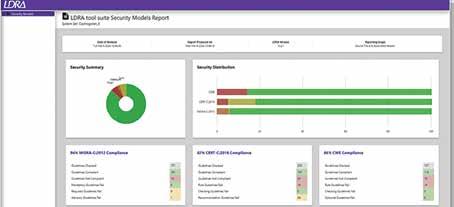
extended taint analysis and vulnerability heat maps—help embedded developers remediate critically issues earlier in the lifecycle.
“Security vulnerabilities in mission-critical systems are just waiting to be exploited, but LDRA can help developers identify and remediate them before release,” said Ian Hennell, Operations Director, LDRA. “The latest features in the LDRA tool suite abstract away much of the noise and complexity of traditional analysis tools to give developers clear, understandable results. Spending less time on “analysis paralysis” enables embedded software teams to focus on early vulnerability remediation and faster compliance.”
Early vulnerability detection, easy-to-understand results
Understanding and prioritizing analysis results consumes more time and skills than development teams can afford, often leading to shortcuts that may compromise the security of embedded systems. The new capabilities of the
has been adapted from its defense origins to the enterprise UAS sector for visualizing airspace traffic and controlling uncrewed systems in its GCS format. Ownership, cooperative, and noncooperative traffic are all visualized inside IRIS Terminal’s multiple viewing configurations, along with useful features such as Detect-and-Avoid (DAA) sensor footprints, terrain awareness, or potential conflict warnings. Where the same aircraft produces multiple tracks (one track per sensor), IRIS Terminal’s ‘smart correlator’ feature correlates these multiple tracks into one single track to ensure the user interface (UI) remains uncluttered and the operator can focus on the work at hand.
Radar uniquely captures all airspace movement, regardless of weather or lighting conditions, and Echodyne’s patented metamaterials electronically scanned array (MESA®) radars create an exceptionally detailed picture of airspace movement. Proven in Defense and National Security markets, Echodyne’s patent-protected MESA radar extends electronically scanned array (ESA) performance to civilian security and airspace management applications at COTS (commercial off-the-shelf) price points for the first time.

LDRA tool suite improve analysis effectiveness and reduce developers’ workloads for critical systems in aerospace, defense, automotive, industrial controls, and medical devices.
Combining security vulnerability reports, security audits, security reviews, and taint analysis gives embedded software teams powerful ways to identify vulnerabilities earlier in the lifecycle and support DevSecOps practices.
“LDRA has always been at the forefront of advanced analysis tools that ease developers’ workloads,” Hennell added. “The latest capabilities of the LDRA tool suite refine our approaches to analysis effectiveness and usability to help enterprise organizations improve their secure software development processes without additional overhead.”
LDRA ldra.com
Adding Echodyne radars as pre-integrated components for IRIS enables Kongsberg’s customers to rapidly extend operations by combining extraordinary radar accuracy with market-leading visualization tools for managing enterprise-scale UAS operations.
“The benefits of combining market-leading data and spatial visualization capabilities with radar images showing such great detail of the airspace are enormous,” said Leo McCloskey, VP of Marketing, Echodyne. “AAM applications requiring BVLOS approvals must present the safety case for comprehensive airspace situational awareness, and this collaboration delivers that to customers.”
“We couldn’t be more driven to forge this collaboration between two UAS industry leaders and are excited about the BVLOS prospects to arise from this new relationship,” said Thomas Jimenez, Market Director for UAS at Kongsberg Geospatial. “Leveraging EchoGuard inside IRIS Terminal is truly the marriage of performance solutions to provide Electronic Observers with robust airspace deconfliction tools. Ground-based EchoGuard DAA is our starting point, and we are very excited about the potential of EchoShield and more complex onboard solutions in the near future.”
Kongsberg Geospatial kongsberggeospatial.com
32 COTS Journal | April 2024
April 2024 COT’S PICKS
New XMC Module Features Zynq® UltraScale+™ MPSoC for Embedded I/O Processing and Programmable Logic Functions
Acromag’s new XMC offers multi-core ARM® processors, FPGA capabilities, and I/O interfaces on a modular format for high-performance computing applications in various architectures. New XMC Module Features Zynq® UltraScale+™ MPSoC for Embedded I/O Processing and Programmable Logic Functions.
Wixom, MI: Acromag introduced the new XMC-ZU5EV module with an AMD (Xilinx) Zynq UltraScale+ device that combines a feature-rich ARM-based processing system and FPGA logic in a single chip. A quad-core application processor and dual-core real-time processor deliver high-performance CPU capabilities. The integrated programmable logic is ideal for compute-intensive tasks. Dedicated processing blocks are available for graphics and video processing. Additional resources include on-chip memory, external memory interfaces, and a rich set of
Announcing First Shipments of MatrixSpace Radar
MatrixSpace Radar—the smallest, lightest, low-cost, high-performance radar—is now shipping to commercial and public organizations in the United States and approved international countries. The award-winning product’s commercial delivery follows its recent Federal Communications Commission authorization.
Designed and developed in the USA, Matrix-
peripheral connectivity interfaces. It is an ideal solution for real-time control, sensor fusion, data processing, and many other functions for defense, industrial, or laboratory applications.
AMD’s XCZU5EV multi-processor systemon-a-chip (MPSoC) hosts a quad-core ARM Cortex A53 and dual-core ARM Cortex R5 for heterogeneous computing and scalability. On-chip programmable logic has 256k cells, 1248 DSP slices, lots of RAM, and high-speed interfaces to outperform multi-chip FPGA solutions: an integrated Mali™-400 GPU and video codec support offloading of multi-media processing.
“With multiple processing engines, advanced programmable logic, and high-speed interfaces, this XMC offers immense possibilities for sensor, packet, image, and video processing applications,” states Robert Greenfield, Acromag’s Business Development Manager.
Designed and manufactured in the USA, these XMCs provide dependable operation for military, aerospace, transportation, manufacturing, and scientific research systems—the versatile
Space Radar offers robust situational awareness of airborne and ground-based objects, regardless of lighting and weather conditions. This facilitates highly accurate drone detection and counter-unmanned aircraft system (CUAS) capabilities beyond visual line of sight (BVLOS) flight for uncrewed, autonomous, and tethered aircraft and overall general aviation safety.
MatrixSpace Radar has a very low SWaP-C (size, weight, power, and cost), requires no additional infrastructure, and can be deployed in minutes without specialist training.

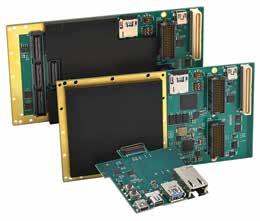
mezzanine format mounts on VPX, VME, PCIe, and other embedded computing carrier cards. Air-cooled versions for front I/O and conduction-cooled models for backplane I/O are available. Various plug-in front I/O cards interface Ethernet, USB, DisplayPort, RS485, LVDS, and other I/O signals.
The beauty of the Zynq UltraScale+ MPSoC architecture lies in the tight integration of its programmable logic with the processing system. Its high-throughput interface eliminates bottlenecks that plague two-chip FPGA solutions and allows designers to easily extend the processing system’s capabilities. Now, developers can build custom designs by adding peripherals to the programmable logic and increase overall system performance by partitioning hardware and software functions with custom accelerators.
Acromag acromag.com
signed to provide radar for the rest of us - cost and performance which allows for use cases previously out of reach to commercial, public safety and defense situations.”
Quote from Manu Lubrano, CEO and co-founder, INVOLI
Quote from Dan Nobbe, Vice President of RF and Radar Systems,
MatrixSpace
“The demand for fast, effective ground and air surveillance is growing rapidly, and partners and customers tell us their limitations with current solutions. MatrixSpace Radar is de-
“MatrixSpace provides scalable, comprehensive, low altitude, noncooperative detection at any time of day or weather, at a price point that finally makes powerful radar readily accessible. This is key for accelerating advanced air mobility and a wide range of public safety and commercial programs such as drone first responder, drone detection, and critical infrastructure inspections.”
MatrixSpace’s mission is to offer real-time AI and edge processing-based sensing with the ability to detect and track multiple types of objects in any environment. Combining industry-leading sensing, AI edge processing, and RF communication in real-time is a significant technology breakthrough that will reinvent business models across multiple vertical market applications, particularly in the defense and public safety industry. MatrixSpace Radar is the foundational product of this open architecture sensing platform.
MatrixSpace matrixspace.com
COTS Journal | April 2024 34
COTS ADVERTISERS COTS
Behlman
Interface
OTEK
PICO
COTS
POSTMASTER:
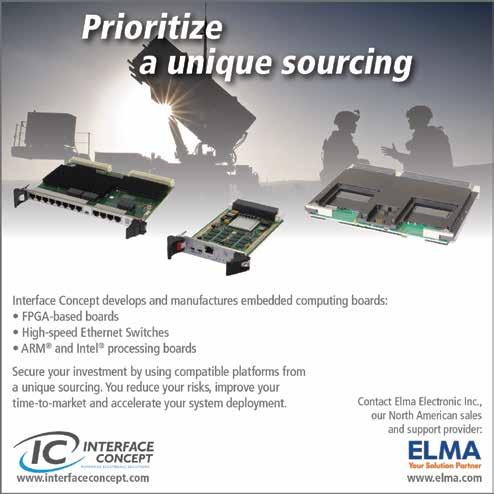

Index
Page # Website
Micro Systems ...................................... 9 ........................................ www.annapmicro.com
Company
Annapolis
Electronics ............................................. 13/BC ............................................. www.behlman.com
Systems ........................................................ IFC/10 ..................................... www.core-systems.com
River Technology ......................................... 4 .................................... www.greatrivertech.com
Industries ...................................................... 5 ................................................ www.holoind.com
Core
Great
Holo
Concept ................................................. IBC ................................ www.interfaceconcept.com
...................................................................... 12/18-19 ............................................. www.otekcorp.com
7/IBC ...................................
................................................ 11 ...............................
Electronics, Inc ............................................
www.picoelectronics.com Pixus Technologies
www.pixustechnologies.com
Journal (ISSN#1526-4653) is published monthly at; 3180 Sitio Sendero, Carlsbad, CA. 92009.
Periodicals Class postage paid at San Clemente and additional mailing offices.
Send address changes to COTS Journal, 3180 Sitio Sendero, Carlsbad, CA. 92009.









































































